- What Atmospheric Layer Do Planes Fly In?

- The stratosphere is the second layer of the atmosphere and the one where the ozone layer is formed and where the planes fly in.
- The temperatures in the stratosphere are inverse to those in the troposphere, meaning they rise with altitude.
- The reason airplanes fly through the stratosphere is that doing so is the most efficient way for fuel consumption.
Planes fly in the second layer of the atmosphere called the stratosphere. This layer is placed above the troposphere and below the mesosphere. The layer got its name because it is stratified in temperature. This means that the warmer layers are higher up while the colder layers are closer to our planet.
The reason the temperature increases with height is because of the ozone layer . It absorbs the Sun’s ultraviolet radiation. This makes the stratosphere opposite of the troposphere, the layer where humans live. In that layer, the temperature decreases the higher we go.

The Stratosphere
The stratosphere is separated from the troposphere by a layer called the tropopause. This is the place where the temperature inversion starts to happen. The height of the stratosphere changes depending on the part of the planet. It can be 66,000 feet high near the equator, but it gets significantly lower when we approach the poles. There, the stratosphere begins at heights of just 23,000 feet.
The temperatures in the stratosphere vary greatly but are always much colder than the surface of our planet. The temperature near the tropopause is always around -51°C, and it rises to around -15°C when we approach the mesosphere . However, the temperatures in this layer are known to vary greatly depending on the season we are in. During the winter, they can get extremely low. The winds blowing in the stratosphere are much stronger than those in the troposphere. They can reach speeds of up to 130 miles per hour.
The Ozone Layer
The stratosphere is the layer of the atmosphere where we can find the ozone layer . The ozone layer forms when molecular oxygen absorbs the extremely high amounts of energy coming from the Sun. This happens at wavelengths that are shorter than 240 nanometers. When the oxygen molecules split, they produce radicals that combine with molecular oxygen and then form ozone.
Ozone gets photolyzed faster than molecular oxygen. It also has a stronger absorption because of the more intense solar emission at its wavelengths. The ozone layer is also known as the ozone shield, and it absorbs the majority of the ultraviolet radiation coming from the Sun. We mainly find the ozone layer in the lower parts of the stratosphere, although this varies depending on the geographical location.
Aircraft In The Stratosphere
The majority of commercial airlines fly at heights between 30,000 and 39,000 feet, which makes up the lower parts of the stratosphere. These parts are chosen because flying through them is optimal for the consumption of fuel . The low temperatures combined with low air density are responsible for this. They allow the planes to fly faster while also maintaining the necessary lift.
Due to the constant temperature in the tropopause and the stratosphere, there is less chance of turbulence to occur there. The turbulence that happens when we fly somewhere in commercial flights is caused by local wind shears and small variations that happen in the jet stream. However, the dangers of thunderstorms may cause stronger turbulence in these parts.
More in Answer

What Makes New York The World's Media Capital?

Are There Tigers In Africa?

Is The Irukandji Jellyfish Deadly?

Do Starfish Have Eyes?

Countries Located In The Southern Hemisphere

What's The Definition Of A Cosmopolitan City?

What Color Is Lightning?
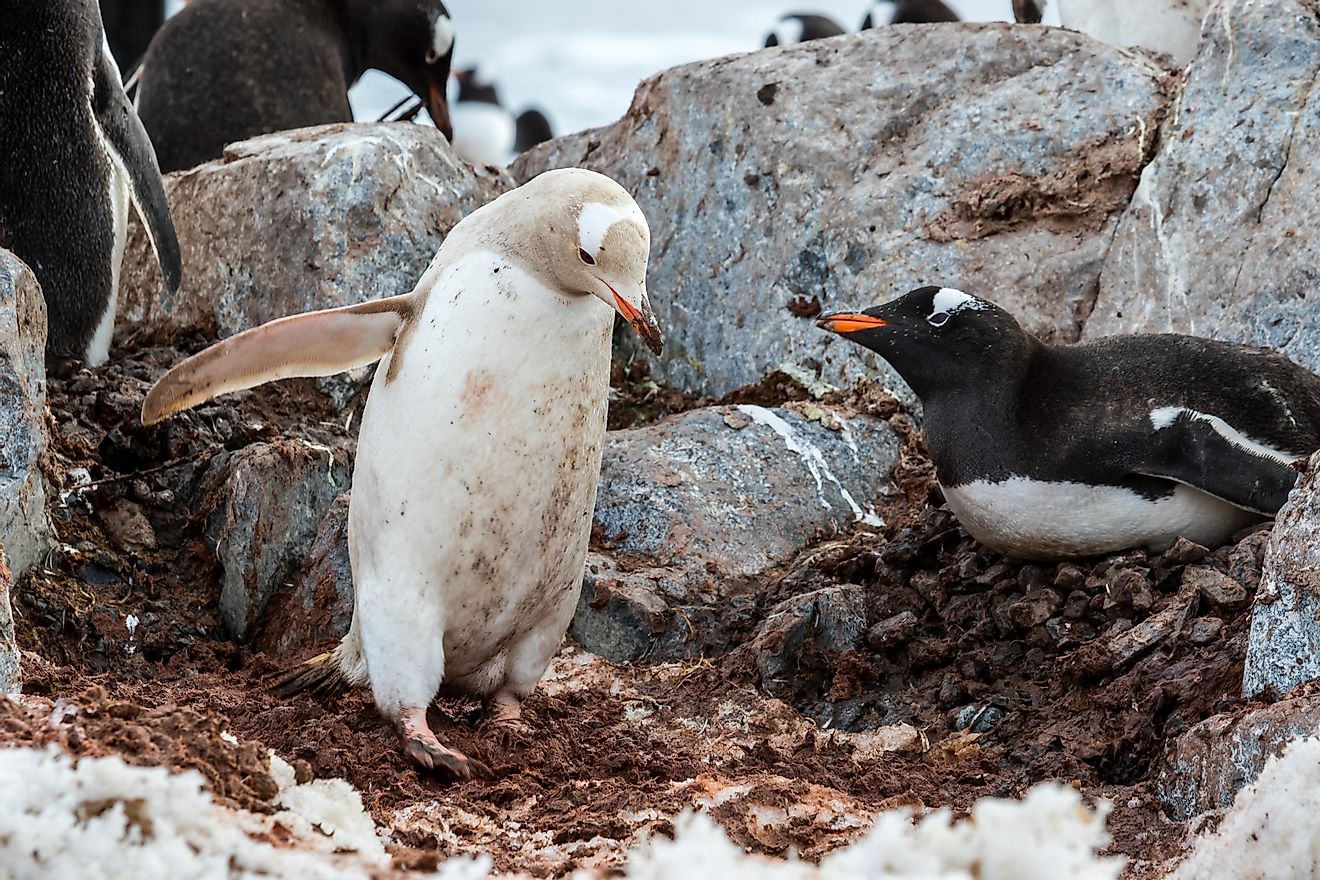
Are There Any Albino Penguins?
The Layers and Composition of our Atmosphere

The atmosphere surrounds us and is all around us. It is the envelope of air that allows life on Earth and is the fluid medium through which we fly. Aircraft flying within our atmosphere are subjected to the variations in pressure, density, temperature, and viscosity which characterise the various layers of the atmosphere.
These variations have a marked effect on the performance of an aircraft and for that reason it is important to have a working knowledge of the composition and characteristics of the atmosphere.
Chemical Composition of our Atmosphere
The previous post in this Principles of Flight series discussed the fact that air is a fluid, and as such has fluid properties like mass, pressure, and viscosity.
Air is a mixture of gasses; principally Nitrogen (78%) and Oxygen (21%). Argon makes us slightly less than 1%, and the remaining 0.1% is comprised of Carbon Dioxide, Helium, Neon, Methane, and Krypton.
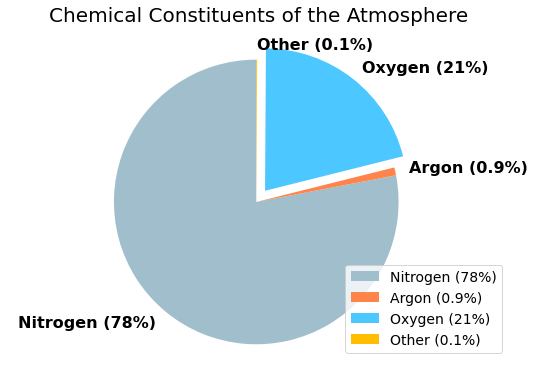
It is important to recognise that this chemical composition is not evenly distributed. The various elements have different weights and as such rise or fall based on their relative density. Oxygen is relatively heavy and so is concentrated closer to the Earth's surface. The majority of the oxygen in the atmosphere is concentrated below 35 000 ft (10.7 km), which is approximately 10% of the height of the altitude designated as the start of space ( Karmen Line ).
Five Atmospheric Layers
There are five distinct layers making up our atmosphere. These layers are differentiated by their differing:
- thermal characteristics
- chemical composition
- movement, and
Troposphere
This is the name given to the lower atmosphere and the region in which almost all weather occurs. The troposphere begins at the Earth's surface and extends to a height of approximately 20 km at the equator. The height of the troposphere varies with latitude; from 20 km at the equator to 6 km at the North and South Pole.
The majority of air traffic operates in the troposphere, which is characterised by decreasing pressure, density and temperature with altitude . This is why it is advantageous for aircraft to operate at higher altitudes, as a decrease in air density means a reduction in drag and improved fuel efficiency.
Stratosphere
The stratosphere sits above the troposphere and extends to around 50 km above the surface of the Earth. This region is characterised by an increase in temperature with altitude, resulting from the heat released by the formation of Ozone. The temperature in the lower regions of the stratosphere is approximately -50ºC (-60ºF), while the upper regions are closer to -15ºC (5ºF).
The reverse in direction of the lapse rate (temperature change with altitude) between the stratosphere and troposphere means that a layer of warmer air is located above cooler air. This prevents convection into the upper altitudes and is responsible for the anvil-shaped tops of cumulonimbus clouds which marks the start of the stratosphere.
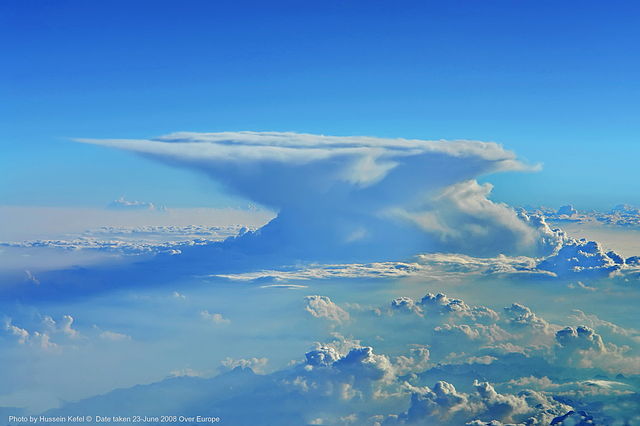
This layer extends from about 50 km (31 miles) above the surface of the Earth to 85 km (53 miles), and is characterised by decreasing temperature with altitude. The stratosphere and mesosphere are considered to be the middle atmosphere.
Thermosphere
The thermosphere starts at approximately 85 km (53 miles) above the Earth's surface and extends to 600 km (375 miles). The International Space Station (ISS) orbits at 408 km which is well within the thermosphere. The Hubble Space Telescope orbits at approximately 550 km above the surface of the Earth, at the top of the Thermosphere.
The exosphere extends from about 600 km (375 miles) to 10 000 km (6 200 miles) above the surface of the Earth.
International Standard Atmosphere
Our atmosphere is in a constant state of flux due to both local and global weather phenomena. Local conditions vary all the time, both laterally along the surface of the Earth and vertically with altitude. This necessitates that a theoretical model of the atmosphere is used by aircraft designers and instrument manufacturers to develop the performance calculations shown in the Pilot Operating Handbook and as a reference for instruments such as the airspeed indicator , altimeter , and vertical speed indicator.
This atmosphere model is referred to as the International Standard Atmosphere and provides a mathematical model describing how pressure, temperature, density, and viscosity vary over a range of altitudes from sea level to 80 km.
Our Standard Atmosphere Calculator is a popular tool which outputs the relevant atmospheric properties given an altitude and temperature or temperature offset from standard.
Sea level standard conditions are an important set of atmospheric values that should be known by all pilots. This fictitious "standard day" is used among other things to calibrate airspeed indicators and altimeters based on the assumption that the aircraft is operating at sea level on a standard day.
A standard temperature lapse rate exists where the temperature in the atmosphere is said to decrease from 15°C (59°F) at sea level at a rate of 1.98°C/1000 ft up to 36 000 ft where the temperature is approximately -56°C (-69°F). Thereafter the temperature is approximated to be constant up to 80 000 ft.
A pressure lapse rate of approximately 1 hPa per 30 ft (1 inHg per 1000 ft) in the lower atmosphere provides a means to approximate the static pressure change with altitude.
Any time the atmosphere differs from this standard atmosphere (most of the time) there will be a discrepancy in the assumed and actual conditions and a correction will need to be made. This takes the form of an adjustment of the Kollsman window on an altimeter, or the conversion from indicated to true airspeed on the airspeed indicator.
This is also where the concepts of Pressure and Density altitude , and their implications must be well understood. Of particular importance is the role that increased temperatures plays in reducing the air density, and hence the performance of an aircraft. This is most vital when operating at high elevation airfields on a hot day. The loss in performance associated with high density altitudes was brought into sharp focus with the recent (July 2023) fatal crash of a light Cessna Twin as Santa Fe Regional airport . In this case the density altitude was greater than 9000 ft and the aircraft was unable to climb or maintain altitude on a single engine.
Factors Affecting Air Density
Air density is affected by changes in altitude, temperature, and humidity. It is important to understand how these atmospheric properties affect the air density, and therefore aircraft performance
Decreasing pressure is associated with increasing altitude. At higher altitudes the air is able to expand and occupy a larger region. Decreasing pressure therefore results in decreased air density at a constant temperature .
Temperature
Increasing temperature results in a decrease in density at a constant pressure .
Since temperature and pressure both decrease with altitude, the drop in temperature associated with altitude gain works in opposition to the dropping pressure. However, the pressure drop with altitude dominates such that air density decreases with increasing altitude.
Humidity (Moisture)
In the preceding cases we have assumed that the air is perfectly dry. In reality there is always some amount of water vapour suspended in the air, which in cases where the humidity is high , has a non-negligible effect on the air density.
Water vapour is lighter than air; this means that humid or moist air is lighter than dry air. Therefore, the higher the humidity, the lower the air density.
Share Article
Popular posts.

Search by Category
- Fundamentals Of Aircraft Design
- Calculators
- Aerodynamics
- Airframe Structure And Control Surfaces
- Electrical System
- Instrumentation
- Landing Gear
- Principles Of Flight
- Quick Concepts
This website uses cookies to ensure you get the best experience on our website.
By continuing here you are consenting to their use. Please refer to our privacy policy for further information.

- Science Notes Posts
- Contact Science Notes
- Todd Helmenstine Biography
- Anne Helmenstine Biography
- Free Printable Periodic Tables (PDF and PNG)
- Periodic Table Wallpapers
- Interactive Periodic Table
- Periodic Table Posters
- Science Experiments for Kids
- How to Grow Crystals
- Chemistry Projects
- Fire and Flames Projects
- Holiday Science
- Chemistry Problems With Answers
- Physics Problems
- Unit Conversion Example Problems
- Chemistry Worksheets
- Biology Worksheets
- Periodic Table Worksheets
- Physical Science Worksheets
- Science Lab Worksheets
- My Amazon Books
Layers of the Atmosphere

There are five layers of the atmosphere and several secondary layers. The dividing points between these layers are altitude and temperature. Here is the list of the layers of the atmosphere, their altitudes, temperatures, and other properties.
- The atmosphere is the layer of gases that surround Earth.
- The five layers of the atmosphere, in order from the ground up, are the troposphere, stratosphere, mesosphere, thermosphere, and exosphere.
- The atmosphere extends to roughly 100 km or 62 miles. This is the Kármán line, which marks the beginning of space. Note part of the thermosphere and all of the exosphere are beyond this mark.
The 5 Layers of the Atmosphere
The five main layers are the troposphere, stratosphere, mesosphere, thermosphere, and exosphere. Mainly, temperature determines the altitude of these layers. The atmosphere is fluid and changes according to season, day/night cycle, and other factors, so the lower and upper limits of each layer shift.
Troposphere
The troposphere is the layer of the atmosphere that contacts the Earth’s surface. Its average height is 12 km (7.5 mi; 39,000 ft), but it is thickest at the equator and also varies according to weather.
The troposphere contains most of the air and water vapor in the atmosphere. Hence, most clouds and weather occur here. Mostly, temperature decreases with increasing altitude. This is because heat comes from the surface.
The tropopause is the layer separating the troposphere from the stratosphere.
Stratosphere
The stratosphere is the layer bounded by the tropopause at its base (12 km; 7.5 mi; 39,000 ft)) up to the stratopause (55 km; 31 to 34 mi; 164,000 to 180,000 ft). Air pressure within the stratosphere is only about 1/1000 of the pressure at sea level.
Temperature rises with increasing altitude, mainly from the absorption of ultraviolet radiation by the ozone layer. The stratosphere contains few clouds. Most commercial aircraft stay within the troposphere, but some fly in the lower stratosphere.
The mesosphere is the atmospheric layer between the stratosphere and thermosphere. It is bounded by the stratopause (55 km; 31 to 34 mi; 164,000 to 180,000 ft) and mesopause (80–85 km; 50–53 mi; 260,000–280,000 ft).
The mesosphere is the coldest part of the atmosphere, with an average temperature of −85 °C (−120 °F; 190 K). Noctilucent clouds form in this layer. The informally-defined beginning of space begins in the mesosphere because there is just enough air to cause friction for objects approaching Earth from space. Meteors become visible as they enter the mesosphere.
Thermosphere
The thermosphere is the region of the atmosphere between the mesopause (80–85 km; 50–53 mi; 260,000–280,000 ft) and thermopause or exobase (500–1000 km; 310–620 mi; 1,600,000–3,300,000 ft). Its height depends on solar activity. The ionosphere roughly coincides with the lower part of the thermosphere.
The layer gets its name because of its high temperature (~1500 °C or 2700 °F), which increases with altitude. Gas atoms and molecules are far apart from one another. The aurora mainly occurs in the thermosphere. Many satellites and the International Space Station (ISS) are in this layer.
Also, note that “space” begins within the thermosphere at an altitude of 100 km or 62 mi. While part of Earth’s atmosphere actually extends beyond this point, it is where objects start experiencing friction from air.
The exosphere is the outer layer of the Earth’s atmosphere. It extends from the thermopause or exobase (500–1000 km; 310–620 mi; 1,600,000–3,300,000 ft) to around 100,000 km (6,200 mi; 33,000,000 ft). At this point, the atmosphere merges into the solar wind. Atoms and molecules are hundreds of kilometers apart and can escape into space.
The aurora sometimes extends into the lower exosphere. Many artificial satellites orbit within this layer, too.

Where Does Space Start?
Space actually starts within the atmosphere, where objects start to experience friction from air.
Atmospheric Layers Table
This table sums up the key features of the layers of the atmosphere:
Other Atmospheric Layers
Temperature determines the five main layers, but the atmosphere contains other layers, too.
- Ozone Layer : The ozone layer is within the lower stratosphere. In this region, ozone concentration ranges from 2 to 8 parts per million. The layer’s altitude is from 15–35 km (9.3–21.7 mi), although its thickness varies geographically and seasonally. It is thinnest near the poles.
- Ionosphere : The ionosphere ranges in altitude from 50 to 1,000 km (31 to 621 mi). It includes the mesosphere, thermosphere, and part of the exosphere. This is the region where solar radiation ionizes atmospheric gases. The aurora borealis and aurora australis form in the ionosphere.
- Homosphere and Heterosphere : Another way of defining the atmosphere is according to whether the gases are well-mixed and homogeneous (homosphere) or layered (heterosphere). The homosphere includes the troposphere, stratosphere, mesosphere, and lower thermosphere. Most of the thermosphere together with all of the exosphere make up the heterosphere. Here, gases layer by molecular weight. Oxygen and nitrogen are near the bottom of the layer, with hydrogen and helium at the top.
- Barry, R.G.; Chorley, R.J. (1971). Atmosphere, Weather and Climate . London: Menthuen & Co Ltd. ISBN 9780416079401.
- Lutgens, Frederick K.; Edward J. Tarbuck (1995). The Atmosphere (6th ed.). Prentice Hall. ISBN 0-13-350612-6.
- States, Robert J.; Gardner, Chester S. (2000). “Thermal Structure of the Mesopause Region (80–105 km) at 40°N Latitude. Part I: Seasonal Variations”. Journal of the Atmospheric Sciences . 57 (1): 66–77. doi: 10.1175/1520-0469(2000)057<0066:TSOTMR>2.0.CO;2
Related Posts

Layers of Earth's Atmosphere
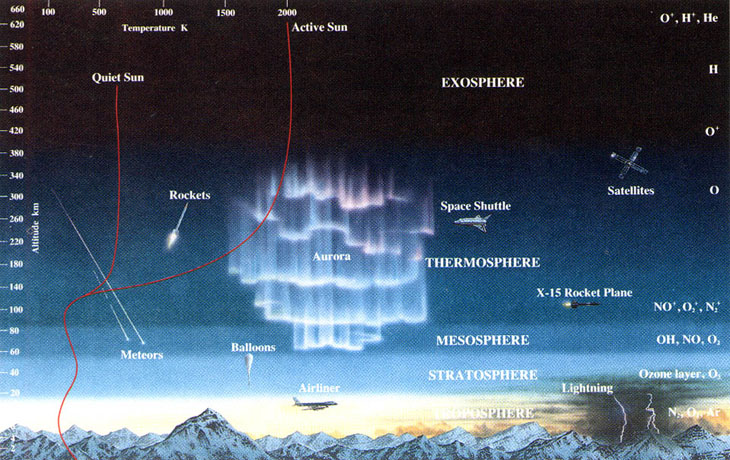
The envelope of gas surrounding the Earth is divided into four distinct layers by thermal characteristics (temperature changes), chemical composition, movement, and density. The troposphere starts at the Earth's surface and extends to about 15 kilometers (9 miles) high. The stratosphere starts just above the troposphere and extends to 50 kilometers (31 miles) high. The mesosphere starts just above the stratosphere and extends to 85 kilometers (53 miles) high. The thermosphere starts just above the mesosphere and extends to 600 kilometers (375 miles) high.

How do airplanes fly? An aerospace engineer explains the physics of flight
Professor of Mechanical and Aerospace Engineering, Clarkson University
Disclosure statement
Craig Merrett receives funding from the Office of Naval Research and L3Harris. He is affiliated with the American Institute for Aeronautics and Astronautics, and is a licensed professional engineering in Ontario, Canada. Dr. Merrett is an associate professor in the Department of Mechanical and Aerospace Engineering at Clarkson University, Potsdam, NY.
Clarkson University provides funding as a member of The Conversation US.
View all partners

Curious Kids is a series for children of all ages. If you have a question you’d like an expert to answer, send it to [email protected] .
How do airplanes fly? – Benson, age 10, Rockford, Michigan
Airplane flight is one of the most significant technological achievements of the 20th century. The invention of the airplane allows people to travel from one side of the planet to the other in less than a day, compared with weeks of travel by boat and train.
Understanding precisely why airplanes fly is an ongoing challenge for aerospace engineers, like me , who study and design airplanes, rockets, satellites, helicopters and space capsules.
Our job is to make sure that flying through the air or in space is safe and reliable, by using tools and ideas from science and mathematics, like computer simulations and experiments.
Because of that work, flying in an airplane is the safest way to travel – safer than cars, buses, trains or boats. But although aerospace engineers design aircraft that are stunningly sophisticated, you might be surprised to learn there are still some details about the physics of flight that we don’t fully understand.
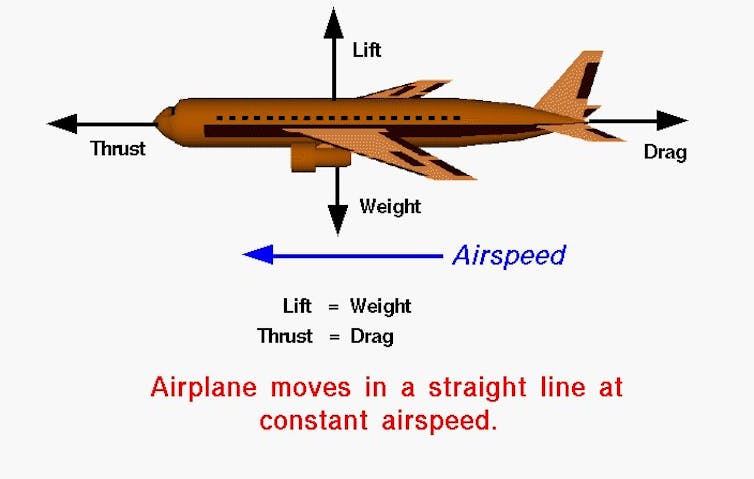
May the force(s) be with you
There are four forces that aerospace engineers consider when designing an airplane: weight, thrust, drag and lift. Engineers use these forces to help design the shape of the airplane, the size of the wings, and figure out how many passengers the airplane can carry.
For example, when an airplane takes off, the thrust must be greater than the drag, and the lift must be greater than the weight. If you watch an airplane take off, you’ll see the wings change shape using flaps from the back of the wings. The flaps help make more lift, but they also make more drag, so a powerful engine is necessary to create more thrust.
When the airplane is high enough and is cruising to your destination, lift needs to balance the weight, and the thrust needs to balance the drag. So the pilot pulls the flaps in and can set the engine to produce less power.
That said, let’s define what force means. According to Newton’s Second Law , a force is a mass multiplied by an acceleration, or F = ma.

A force that everyone encounters every day is the force of gravity , which keeps us on the ground. When you get weighed at the doctor’s office, they’re actually measuring the amount of force that your body applies to the scale. When your weight is given in pounds, that is a measure of force.
While an airplane is flying, gravity is pulling the airplane down. That force is the weight of the airplane.
But its engines push the airplane forward because they create a force called thrust . The engines pull in air, which has mass, and quickly push that air out of the back of the engine – so there’s a mass multiplied by an acceleration.
According to Newton’s Third Law , for every action there’s an equal and opposite reaction. When the air rushes out the back of the engines, there is a reaction force that pushes the airplane forward – that’s called thrust.
As the airplane flies through the air, the shape of the airplane pushes air out of the way. Again, by Newton’s Third Law, this air pushes back, which leads to drag .
You can experience something similar to drag when swimming. Paddle through a pool, and your arms and feet provide thrust. Stop paddling, and you will keep moving forward because you have mass, but you will slow down. The reason that you slow down is that the water is pushing back on you – that’s drag.
Understanding lift
Lift is more complicated than the other forces of weight, thrust and drag. It’s created by the wings of an airplane, and the shape of the wing is critical; that shape is known as an airfoil . Basically it means the top and bottom of the wing are curved, although the shapes of the curves can be different from each other.
As air flows around the airfoil, it creates pressure – a force spread out over a large area. Lower pressure is created on the top of the airfoil compared to the pressure on the bottom. Or to look at it another way, air travels faster over the top of the airfoil than beneath.
Understanding why the pressure and speeds are different on the top and the bottom is critical to understand lift . By improving our understanding of lift, engineers can design more fuel-efficient airplanes and give passengers more comfortable flights.

The conundrum
The reason why air moves at different speeds around an airfoil remains mysterious, and scientists are still investigating this question.
Aerospace engineers have measured these pressures on a wing in both wind tunnel experiments and during flight. We can create models of different wings to predict if they will fly well. We can also change lift by changing a wing’s shape to create airplanes that fly for long distances or fly very fast.
Even though we still don’t fully know why lift happens, aerospace engineers work with mathematical equations that recreate the different speeds on the top and bottom of the airfoil. Those equations describe a process known as circulation .
Circulation provides aerospace engineers with a way to model what happens around a wing even if we do not completely understand why it happens. In other words, through the use of math and science, we are able to build airplanes that are safe and efficient, even if we don’t completely understand the process behind why it works.
Ultimately, if aerospace engineers can figure out why the air flows at different speeds depending on which side of the wing it’s on, we can design airplanes that use less fuel and pollute less.
Hello, curious kids! Do you have a question you’d like an expert to answer? Ask an adult to send your question to [email protected] . Please tell us your name, age and the city where you live.
And since curiosity has no age limit – adults, let us know what you’re wondering, too. We won’t be able to answer every question, but we will do our best.
- Curious Kids
- Curious Kids US

Chief People & Culture Officer
Lecturer / senior lecturer in construction and project management.

Lecturer in Strategy Innovation and Entrepreneurship (Education Focused) (Identified)

Research Fellow in Dynamic Energy and Mass Budget Modelling

Communications Director

The Atmosphere - Aviation Physics
Composition of the atmosphere, atmospheric pressure, atmospheric density, water content of the atmosphere, absolute humidity, relative humidity, vapor pressure, standard atmosphere.
- Physics for Aviation
- Force, Work, Power, and Torque
- Fluid Mechanics
ATSC 113 Weather for Sailing, Flying & Snow Sports
Layers in the standard atmosphere, learning goal 3a. identify atmospheric layers according to temperature characteristics in the standard atmosphere.
If you have ever climbed a mountain, you know that the air gets thinner, making it harder to breathe (lower density at higher altitudes). If you've been in a fast elevator in a tall building, your ears might pop due to the pressure change (lower pressure at higher altitudes). These pressure and density characteristics are discussed in more detail in Learning Goal 2a .
In the early 1900s when early airplane designs were advancing quickly, pilots were able to climb at first to only 1 km altitude. Later, these early pilots were able to reach altitudes of 3 to 4 km. These early pilots discovered that the higher they flew, the colder the air. This is one reason why each pilot who flew open-cockpit airplanes in the early 1900s wore a heavy leather jacket and a scarf around his/her neck.
The average variation of air pressure (P), temperature (T), and density (ρ) with altitude is called the standard atmosphere . The table below shows how those variables change with height (H) above sea level. This table is also shown in Learning Goal 2a .
Temperature
However, temperature does not decrease smoothly at all altitudes. It decreases smoothly at first with increasing altitude in the bottom of the atmosphere, as was discovered by the early pilots. But if you take the data from the table above and plot temperature (T) vs. height (H), the resulting graph (plotted below) shows that there are other regions of the atmosphere where temperature increases with increasing altitude. This temperature structure is used to define the main layers in the atmosphere, as explained next.
Troposphere
Almost all of our weather (clouds, thunderstorms, hurricanes, etc.) occur in the troposphere , which is the bottom part of the atmosphere where temperature decreases roughly linearly (as a straight line) with height. The average temperature around the world at sea level is about 15°C , due to its contact with the sun-heated earth surface. At the 11 km top of the troposphere the temperature is about –56°C. The top of the troposphere is called the tropopause (nickname is "trope"). On average, the troposphere is thinner during winter and thinner near the poles.
All light aircraft fly in the troposphere. In fact, most general aviation aircraft without supplemental oxygen tanks stay in the bottom third of the troposphere, where the air is dense enough for people to breathe (see Learning Goal 2b ).
Stratosphere
Next is the stratosphere, between 11 km and about 47 km above sea level. The top of the stratosphere is called the stratopause. In the stratosphere, temperature does not decrease with increasing height. Instead, the temperature is constant (isothermal) at first, and then gets warmer as you approach the stratopause. The stratopause is warm because of the "good" ozone layer there, which gets hot when it absorbs the harmful ultraviolet rays from the sun.
Many modern commercial aircraft fly in the lower stratosphere to get above most of the storms and weather that are in the troposphere. The Boeing 787 Dreamliner typically flies at about 13.1 km altitude (≈ 43,000 ft). Military aircraft can fly higher, such as the SR-71 Blackbird aircraft, which flies to 25.9 km or 85,000 ft.
The next layer is the mesosphere , where temperature again decreases with increasing altitude. The top of the mesosphere is called the mesopause .
Aside: Astronaut Wings Canada : Astronaut wings for the Royal Canadian Air Force. Image courtesy of the Royal Canadian Air Force. USA : If you fly above an altitude of 80 km ( or about 264,000 feet), then you earn your astronaut wings. Thus, you would be near or above the mesopause. Image courtesy of US FAA. Russian Federation : Cosmonauts are awarded the pilot-cosmonaut title by decree. Image courtesy of russian federation. China : Taikonauts are awarded the First-class space merit medal by the Central Committee of the Communist Party of China, the State Council, and the Central Military Commission. Image courtesy of Baidu.com. China : Taikonaut (I am unable to confirm the validity of this info on this website.) -->
Thermosphere, Exosphere
Above that is the thermosphere , where the temperature increases again with height. Above the thermosphere is the exosphere , where the air is so thin that the molecules do not behave like a gas. The bottom of the exosphere (called the exobase ) is somewhere in the 500 to 1,000 km altitude range, and the top is about 197,000 km (about halfway to the moon).
In the exosphere, the air molecules are very far apart from each other. For example, a typical orbital altitude of the Space Shuttle is 400 km above the Earth's surface. At that height, the air molecules are about 16 km apart from each other. The average distance between molecules is called the mean-free path . At that 400 km altitude, the air density is only about 3 x 10 -12 kg/m 3 . But the Shuttle is moving so fast (24.7 times the speed of sound; i.e., Mach 24.7) that it still feels some friction from these air molecules.
When the Space Shuttle begins reentry into the atmosphere, frictional heating starts becoming very important at about 122 km altitude (≈ 400,000 ft), where the air density is about 2 x 10 -8 kg/m 3 , and the molecular mean-free path is about 4 m between molecules. This reentry heating is extreme all the way down to an altitude of about 70 km altitude (≈230,000 ft), where the air density is about 8 x 10 -5 kg/m 3 , and the molecular mean-free path is about 1 mm. For comparison, at sea level, the mean-free path between air molecules is a bit less than 0.1 micrometers (about 1/10,000 of a millimeter) and air density is 1.225 kg/m 3 . A nice sketch showing the relative depths of the atmosphere layers is on Wikipedia .
Actual vs. Standard Atmosphere
CAUTION: The "standard atmosphere" gives average conditions. However, the actual temperature structure is never average. It varies from location to location, season to season, time to time, weather condition to weather condition. It can have many zigs and zags in the shape of the temperature profile. Pilots need to use the actual conditions (temperature, winds, clouds, weather, etc.) at each time and location along their flight path.
The actual temperature profile at any one instant is described in learning goal: 3b Static Stability and Atmospheric Soundings.
Key words: standard atmosphere, troposphere, tropopause, stratosphere, stratopause, mesophere, mesopause, exosphere, exosbase, mean-free path
Extra info for experts; not needed for this course. The International Standard Atmosphere (ISA): Wikipedia . The US Standard Atmosphere: Wikipedia . The US Naval Research Lab atmosphere model from the ground to space, for estimating air drag on satellites. Wikipedia .
Image credits. The drawing and table were made by Roland Stull, and all are copyright by him and used with his permission.
UBC ATSC 113 - Weather for Sailing, Flying & Snow Sports. Copyright © 2016 - 2024 by Roland Stull. Last updated 25 Jan 2024.

An official website of the United States government
Here’s how you know
Official websites use .gov A .gov website belongs to an official government organization in the United States.
Secure .gov websites use HTTPS A lock ( Lock A locked padlock ) or https:// means you’ve safely connected to the .gov website. Share sensitive information only on official, secure websites.
- JetStream home
Layers of the Atmosphere
- Air Pressure
- The Transfer of Heat Energy
- Energy Balance
- Hydrologic Cycle
- Precipitation
- Layers of the Ocean
- Ocean Circulations
- The Sea Breeze
- The Marine Layer
- Rip Current Safety
- Global Atmospheric Circulations
- The Jet Stream
- Climate vs. Weather
- Climate Zones
- How clouds form
- The Core Four
- The Basic Ten
- Cloud Chart
- Color of Clouds
- Parcel Theory
- Stability-Instability
- Radiosondes
- Skew-T Log-P Diagrams
- Skew-T Plots
- Skew-T Examples
- Pressure vs. Elevation
- Longwaves and Shortwaves
- Basic Wave Patterns
- Common Features
- Thickness Charts
- Weather Models
- Surface Weather Plots
- Norwegian Cyclone Model
- Types of Weather Phenomena
- Electromagnetic waves
- The Atmospheric Window
- Weather Satellites
- How radar works
- Volume Coverage Patterns (VCP)
- Radar Images: Reflectivity
- Radar Images: Velocity
- Radar Images: Precipitation
- Inter-Tropical Convergence Zone
- Classification
- NHC Forecasts
- Hazards & Safety
- Damage Potential
- ENSO Pacific Impacts
- ENSO Weather Impacts
- Ingredients for a Thunderstorm
- Life Cycle of a Thunderstorm
- Types of Thunderstorms
- Hazard: Hail
- Hazard: Damaging wind
- Hazard: Tornadoes
- Hazard: Flash Floods
- Staying Ahead of the Storms
- How Lightning is Created
- The Positive and Negative Side of Lightning
- The Sound of Thunder
- Lightning Safety
- Frequently Asked Questions
- Types of Derechos
- Where and When
- Notable Derechos
- Keeping Yourself Safe
- Historical Context
- Causes: Earthquakes
- Causes: Landslides
- Causes: Volcanoes
- Causes: Weather
- Propagation
- Detection, Warning, and Forecasting
- Preparedness and Mitigation: Communities
- Preparedness and Mitigation: Individuals (You!)
- Select NOAA Tsunami Resources
- Weather Forecast Offices
- River Forecast Centers
- Center Weather Service Units
- Regional Offices
- National Centers for Environmental Prediction
- NOAA Weather Radio
- NWS Careers: Educational Requirements
- Weather Glossary
- Weather Acronyms
- Learning Lessons
- The Ionosphere
- What-a-cycle

Average temperature profile for the lower layers of the atmosphere
Download Image
The envelope of gas surrounding the Earth changes from the ground up. Five distinct layers have been identified using
- thermal characteristics (temperature changes),
- chemical composition,
- movement, and
Each of the layers are bounded by "pauses" where the greatest changes in thermal characteristics, chemical composition, movement, and density occur.

This is the outermost layer of the atmosphere. It extends from about 375 miles (600 km) to 6,200 miles (10,000 km ) above the earth. In this layer, atoms and molecules escape into space and satellites orbit the earth. At the bottom of the exosphere is a transition layer called the thermopause.
Thermosphere
Between about 53 miles (85 km) and 375 miles (600 km) lies the thermosphere, known as the upper atmosphere. While still extremely thin, the gases of the thermosphere become increasingly denser as one descends toward the Earth.
As such, incoming high energy ultraviolet and x-ray radiation from the sun begins to be absorbed by the molecules in this layer and causes a large temperature increase.
Because of this absorption, the temperature increases with height. From as low as -184 °F (-120 °C ) at the bottom of this layer, temperatures can reach as high as 3,600°F (2,000°C) near the top.
However, despite the high temperature, this layer of the atmosphere would still feel very cold to our skin. The high temperature indicates the amount of the energy absorbed by the molecules, but with so few molecules in this layer, the total number would not be enough to heat our skin.
Take it to the MAX! The Ionosphere: The Outer Edges of the Atmosphere
The bottom of the thermosphere is the mesopause - the transition into the mesosphere.
This layer extends from around 31 miles (50 km) above the Earth's surface to 53 miles (85 km). The gases that comprise this layer continue to become denser as one descends. As such, temperatures increase as one descends, rising to about 5°F (-15°C) near the bottom of this layer.
The gases in the mesosphere are now thick enough to slow down meteors hurtling into the atmosphere, where they burn up, leaving fiery trails in the night sky. Both the stratosphere (next layer down) and the mesosphere are considered the middle atmosphere. The transition boundary which separates the mesosphere from the stratosphere is called the stratopause.
Stratosphere
The stratosphere extends from 4 -12 miles (6-20 km) above the Earth's surface to around 31 miles (50 km). This layer holds 19 percent of the atmosphere's gases but very little water vapor.
In this region, the temperature increases with height. Heat is produced in the process of the formation of ozone, and this heat is responsible for temperature increases, from an average -60°F (-51°C) at tropopause to a maximum of about 5°F (-15°C) at the top of the stratosphere.
This increase in temperature with height means warmer air is located above cooler air. This prevents convection as there is no upward vertical movement of the gases. As such, the location of the bottom of this layer is readily seen by the anvil-shaped tops of cumulonimbus clouds
The transition layer at the bottom of the stratosphere is called the tropopause.
Troposphere
Known as the lower atmosphere, almost all weather occurs in this region. The troposphere begins at the Earth's surface, but the height of the troposphere varies. It is 11-12 miles (18-20 km) high at the equator, 5½ miles (9 km) at 50°N and 50°S, and just under four miles (6 km) high at the poles.
As the density of the gases in this layer decrease with height, the air becomes thinner. Therefore, the temperature in the troposphere also decreases with height. As one climbs higher, the temperature drops from an average around 62°F (17°C) to -60°F (-51°C) at the tropopause.
Where Do Planes Fly?

August 30, 2022
This article may contain affiliate links where we earn a commission from qualifying purchases.
Planes fly high in the air, we all know that. But there has to be a reason that they all seem to fly in the same place. So where do planes fly in the sky?
Commercial planes fly at an altitude of around 36,000 feet in the layer of the atmosphere called the stratosphere. Planes fly in the stratosphere to increase fuel efficiency, lessen the risk of issues due to air traffic, avoid weather events, and to have time to deal with emergencies.
If you pay attention to what the pilot says while flying, you’ve probably heard many of them say that you’ve reached the cruising altitude of 35,000 or 36,000 feet. But why do planes always seem to fly at the same altitude? In this article, we’ll take a look at where planes fly in the sky and why that layer of the atmosphere is better than other altitudes.
Here at SkyTough, we only want to put out the best content that we possibly can. Content that you’ll enjoy reading while also learning what you came here for. The best way to do that is for us to research each topic and thoroughly vet the information that we find for accuracy. This research combined with our extensive knowledge of all things aviation leads to what we hope is the best aviation content you’ll find on the web!
Table of contents
where do planes fly in the atmosphere.
If you’ve ever flown in a plane, or if you’re a pilot yourself, then you know one thing for certain — planes fly high in the air . Like really high. From your vantage point in the sky, you might see nothing but the tops of the clouds you’re flying over. And if you can see the ground, you won’t be able to make out anything except the planet’s surface itself. And from down here from where I’m sitting, the plane would just look like a tiny speck in the sky.
But where do planes fly in the sky and why do they fly at those heights?
Planes fly in the middle layer of the atmosphere known as the stratosphere. Without getting too far into the nitty-gritty details of the composition of the atmosphere, it’s mainly made up of five layers. These include the troposphere, stratosphere, mesosphere, thermosphere, and exosphere. For the sake of this article, we’ll focus on the stratosphere and the two adjacent layers.
What Is The Stratosphere?
The troposphere is where we live, down here on the surface of the planet. As you probably know from middle school science classes, this is the only layer of the atmosphere that is naturally conducive to human life. The air is just thick enough to where we can breathe, the temperature is livable, and the weather events (usually) aren’t too drastic.
And while planes certainly can fly in the troposphere — smaller aircraft and helicopters typically do — the stratosphere is where most commercial planes are operating at their best. The second layer of the atmosphere, the stratosphere, is around 30,000 to 160,000 feet. This will vary in different spots of the globe, with it being higher near the equator and lower at the poles. But in most places, planes fly at the heights they do because it falls right within the stratosphere.
In this layer of the atmosphere, air is thinner than down here on earth, which is why pressurized aircraft cabins are a necessity. The temperatures in the stratosphere are far colder than down here on earth, but the way that the temperatures change is a bit strange. The temperature is stratified — hence the name of the layer — meaning that it gets warmer as altitude increases; this is opposite of what happens in all other layers of the atmosphere!
But enough about what the stratosphere is, let’s get into why it’s so beneficial for planes to fly there.
Why Do Planes Fly In The Stratosphere?
Now that you know that planes fly in the stratosphere and you have an idea of what it is, let’s take a look at why planes fly in the stratosphere. After all, planes and pilots wouldn’t waste the energy and time needed to reach those altitudes if it wasn’t for good reason!
Increased Fuel Efficiency
The main reason that planes fly in the stratosphere is to make the most out of fuel consumption. The fuel that planes run on is very different from the gasoline that you and I fill up our cars with to drive around town. It’s not cheap and airlines want to get the best fuel efficiency possible out of it. And since the air is much thinner in the stratosphere than it is in the troposphere, planes are able to get much better fuel efficiency.
The reason for this mainly comes down to how planes fly in the first place. Not only is lift necessary for a plane to stay in the air, it also needs to be able to overcome drag and friction in the atmosphere so it can keep flying forward. The jet engines on planes are designed to operate at optimal efficiency in the thin air of the stratosphere. More power and less drag leads to better fuel efficiency and faster airspeeds .
Less Air Traffic
Another reason why most types of planes try to fly in the stratosphere is to avoid the air traffic down here in the troposphere. Even though if you look up into the sky it seems like there is just endless space, it can get pretty crowded up there all things considered. Most smaller airplanes, helicopters, drones, etc. fly at lower altitudes and remain in the troposphere, so it can get congested.
To avoid all of this, commercial airplanes like to fly in the stratosphere between 30,000 and 43,000 feet. This way, they can stay above the traffic generated from the smaller aircraft. And once they’re up in the stratosphere, planes are actually required to turn on autopilot so that it keeps them within 1,000 feet of a set altitude. This also helps to control air traffic and keep everyone flying as safely as possible.
Avoiding Weather Events
Sure, sometimes when you’re flying you might go through a thunderstorm or get battered about by winds and rain. But most of the time, this happens before you actually reach cruising altitude . This is because most of the weather events that we experience down here on earth happen in the troposphere. So if planes fly in the next layer of the atmosphere, they can avoid severe weather events as much as possible.
After all, if you’ve ever been on an airplane and looked out the window after you’ve reached cruising altitude, then you probably see the clouds below you. Most of the weather that we experience down here on earth is generated in the clouds, so flying in the stratosphere helps to avoid this as much as possible.
Dealing With Emergencies
One final reason that planes fly so high in the air is so that pilots have ample time to deal with emergencies. Although this is something that we don’t really like to think about as either pilot or passenger, it is still a reality and is one that must be taken seriously. Planes (and pilots) can experience a multitude of problems while flying that could potentially cause a plane to go down .
By flying at such extreme heights, pilots have more time to react to these issues and emergencies so that they can do everything in their power to safely land the aircraft. You never want to hear a pilot come over the radio and say there is an issue with the airplane , but it’s something that everyone involved needs to be prepared for. And having ample time to figure out a solution could easily be the difference between life and death.

When Do Doors Close On An Airplane Before Flight?

What Is A Very Light Jet?

Does Cessna Make Jets?

How Much Does A Plane Cost?
About THE AUTHOR
Joe Haygood
Obsessed with Planes and Flying

Trending Now

How High Can A Piper Fly?

The Best Small Planes You Can Buy Right Now

How Much Does A Boeing Plane Cost?

How Much Does It Really Cost To Paint A Plane?
Learn all about planes and pilots, and even how to fly, with SkyTough. We'll explore the ins and outs of the sky and how to travel through it. Read more about us, here .

©2024 SkyTough. All rights reserved.
We can be reached at [email protected]
SkyTough.com is a participant in the Amazon Services LLC Associates Program, an affiliate advertising program designed to provide a means for sites to earn advertising fees by advertising and linking to Amazon. This site also participates in other affiliate programs including but not limited to ShareASale, CJ, and ClickBank, and is compensated for referring traffic and business to these companies.
Parts of the Atmosphere
We live at the bottom of an invisible ocean called the atmosphere, a layer of gases surrounding our planet. Nitrogen and oxygen account for 99 percent of the gases in dry air, with argon, carbon dioxide, helium, neon, and other gases making up minute portions.
Chemistry, Earth Science, Astronomy, Meteorology, Geography, Physical Geography
Loading ...
We live at the bottom of an invisible ocean called the atmosphere , a layer of gases surrounding our planet . Nitrogen and oxygen account for 99 percent of the gases in dry air , with argon , carbon dioxide , helium , neon , and other gases making up minute port ions . Water vapor and dust are also part of Earth ’s atmosphere . Other planets and moons have very different atmospheres , and some have no atmospheres at all.
The atmosphere is so spread out that we barely not ice it, yet its weight is equal to a layer of water more than 10 meters (34 feet) deep covering the entire planet. The bottom 30 kilometers (19 miles) of the atmosphere contains about 98 percent of its mass . The atmosphere— air —is much thinner at high altitudes . There is no atmosphere in space. Scientists say many of the gases in our atmosphere were ejected into the air by early volcanoes . At that time, there would have been little or no free oxygen surrounding Earth. Free oxygen consists of oxygen molecules not attached to another element , like carbon (to form carbon dioxide) or hydrogen (to form water). Free oxygen may have been added to the atmosphere by primitive organisms, probably bacteria , during photosynthesis . Photosynthesis is the process a plant or other autotroph uses to make food and oxygen from carbon dioxide and water. Later, more complex forms of plant life added more oxygen to the atmosphere. The oxygen in today’s atmosphere probably took millions of years to accumulate . The atmosphere acts as a gigantic filter , keeping out most ultraviolet radiation while letting in the sun’s warming rays. Ultraviolet radiation is harmful to living things, and is what causes sunburns. Solar heat, on the other hand, is necessary for all life on Earth. Earth’s atmosphere has a layered structure. From the ground toward the sky, the layers are the troposphere , stratosphere , mesosphere , thermosphere , and exosphere . Another layer, called the ionosphere , extends from the mesosphere to the exosphere. Beyond the exosphere is outer space . The boundaries between atmospheric layers are not clearly defined, and change depending on latitude and season . Troposphere The troposphere is the lowest atmospheric layer. On average, the troposphere extends from the ground to about 10 kilometers (six miles) high, ranging from about six kilometers (four miles) at the poles to more than 16 kilometers (10 miles) at the Equator . The top of the troposphere is higher in summer than in winter. Almost all weather develops in the troposphere because it contains almost all of the atmosphere’s water vapor. Clouds , from low-lying fog to thunderheads to high-altitude cirrus , form in the troposphere. Air masses , areas of high-pressure and low-pressure systems , are moved by winds in the troposphere. These weather systems lead to daily weather changes as well as seasonal weather patterns and climate systems, such as El Niño. Air in the troposphere thins as altitude increases. There are fewer molecules of oxygen at the top of Mount Everest , Nepal, for example, than there are on a beach in Hawai'i. This is why mountaineers often use canisters of oxygen when climbing tall peaks. Thin air is also why helicopters have difficulty maneuvering at high altitudes. In fact, a helicopter was not able to land on Mount Everest until 2005. As air in the troposphere thins, temperature decreases. This is why mountaintops are usually much colder than the valleys beneath. Scientists used to think temperature continued to drop as altitude increased beyond the troposphere. But data collected with weather balloons and rockets have showed this is not the case. In the lower stratosphere, temperature stays almost constant. As altitude increases in the stratosphere, temperature actually increases. Solar heat penetrates the troposphere easily. This layer also absorbs heat that is reflected back from the ground in a process called the greenhouse effect . The greenhouse effect is necessary for life on Earth. The atmosphere’s most abundant greenhouse gases are carbon dioxide, water vapor, and methane . Fast-moving, high-altitude winds called jet streams swirl around the planet near the upper boundary of the troposphere. Jet streams are extremely important to the airline industry. Aircraft save time and money by flying in jet streams instead of the lower troposphere, where air is thicker.
Stratosphere The troposphere tends to change suddenly and violently, but the stratosphere is calm. The stratosphere extends from the tropopause , the upper boundary of the troposphere, to about 50 kilometers (32 miles) above Earth’s surface. Strong horizontal winds blow in the stratosphere, but there is little turbulence . This is ideal for planes that can fly in this part of the atmosphere. The stratosphere is very dry and clouds are rare. Those that do form are thin and wispy. They are called nacreous clouds. Sometimes they are called mother-of-pearl clouds because their colors look like those inside a mollusk shell. The stratosphere is crucial to life on Earth because it contains small amounts of ozone , a form of oxygen that prevents harmful UV rays from reaching Earth. The region within the stratosphere where this thin shell of ozone is found is called the ozone layer . The stratosphere’s ozone layer is uneven, and thinner near the poles. The amount of ozone in the Earth’s atmosphere is declining steadily. Scientists have linked use of chemicals such as chlorofluorocarbons (CFCs) to ozone depletion . Mesosphere The mesosphere extends from the stratopause (the upper boundary of the stratosphere) to about 85 kilometers (53 miles) above the surface of the Earth. Here, temperatures again begin to fall. The mesosphere has the coldest temperatures in the atmosphere, dipping as low as -120 degrees Celsius (-184 degrees Fahrenheit or 153 kelvin). The mesosphere also has the atmosphere’s highest clouds. In clear weather, you can sometimes see them as silvery wisps immediately after sunset. They are called noctilucent clouds, or night-shining clouds. The mesosphere is so cold that noctilucent clouds are actually frozen water vapor—ice clouds. Shooting stars —the fiery burnout of meteors , dust, and rocks from outer space—are visible in the mesosphere. Most shooting stars are the size of a grain of sand and burn up before entering the stratosphere or troposphere. However, some meteors are the size of pebbles or even boulders . Their outer layers burn as they race through the mesosphere, but they are massive enough to fall through the lower atmosphere and crash to Earth as meteorites . The mesosphere is the least-understood part of Earth’s atmosphere. It is too high for aircraft or weather balloons to operate, but too low for spacecraft . Sounding rockets have provided meteorologists and astronomers their only significant data on this important part of the atmosphere. Sounding rockets are unmanned research instruments that collect data during suborbital flights. Perhaps because the mesosphere is so little understood, it is home to two meteorological mysteries: sprites and elves . Sprites are reddish, vertical electrical discharges that appear high above thunderheads, in the upper stratosphere and mesosphere. Elves are dim, halo-shaped discharges that appear even higher in the mesosphere. Ionosphere The ionosphere extends from the top half of the mesosphere all the way to the exosphere. This atmospheric layer conducts electricity . The ionosphere is named for ions created by energetic particles from sunlight and outer space. Ions are atoms in which the number of electrons does not equal the number of protons , giving the atom a positive (fewer electrons than protons) or negative (more electrons than protons) charge. Ions are created as powerful x-rays and UV rays knock electrons off atoms. The ionosphere—a layer of free electrons and ions—reflects radio waves . Guglielmo Marconi , the “Father of Wireless,” helped prove this in 1901 when he sent a radio signal from Cornwall, England, to St. John’s, Newfoundland, Canada. Marconi’s experiment demonstrated that radio signals did not travel in a straight line, but bounced off an atmospheric layer—the ionosphere. The ionosphere is broken into distinct layers, called the D, E, F1, and F2 layers. Like all other parts of the atmosphere, these layers vary with season and latitude. Changes in the ionosphere actually happen on a daily basis. The low D layer, which absorbs high-frequency radio waves, and the E layer actually disappear at night, which means radio waves can reach higher into the ionosphere. That’s why AM radio stations can extend their range by hundreds of kilometers every night. The ionosphere also reflects particles from solar wind , the stream of highly charged particles ejected by the sun. These electrical displays create auroras (light displays) called the Northern and Southern Lights . Thermosphere The thermosphere is the thickest layer in the atmosphere. Only the lightest gases—mostly oxygen, helium, and hydrogen—are found here. The thermosphere extends from the mesopause (the upper boundary of the mesosphere) to 690 kilometers (429 miles) above the surface of the Earth. Here, thinly scattered molecules of gas absorb x-rays and ultraviolet radiation. This absorption process propels the molecules in the thermosphere to great speeds and high temperatures. Temperatures in the thermosphere can rise to 1,500 degrees Celsius (2,732 degrees Fahrenheit or 1,773 kelvin). Though the temperature is very high, there is not much heat. How is that possible? Heat is created when molecules get excited and transfer energy from one molecule to another. Heat happens in an area of high pressure (think of water boiling in a pot). Since there is very little pressure in the thermosphere, there is little heat transfer. The Hubble Space Telescope and the International Space Station (ISS) orbit Earth in the thermosphere. Even though the thermosphere is the second-highest layer of Earth’s atmosphere, satellites that operate here are in “ low-Earth orbit .” Exosphere The fluctuating area between the thermosphere and the exosphere is called the turbopause . The lowest level of the exosphere is called the exobase . At the upper boundary of the exosphere, the ionosphere merges with interplanetary space , or the space between planets. The exosphere expands and contracts as it comes into contact with solar storms . In solar storms particles are flung through space from explosive events on the sun, such as solar flares and coronal mass ejections (CMEs). Solar storms can squeeze the exosphere to just 1,000 kilometers (620 miles) above the Earth. When the sun is calm, the exosphere can extend 10,000 kilometers (6,214 miles). Hydrogen, the lightest element in the universe , dominates the thin atmosphere of the exosphere. Only trace amounts of helium, carbon dioxide, oxygen, and other gases are present. Many weather satellites orbit Earth in the exosphere. The lower part of the exosphere includes low-Earth orbit, while medium-Earth orbit is higher in the atmosphere. The upper boundary of the exosphere is visible in satellite images of Earth. Called the geocorona , it is the fuzzy blue illumination that circles the Earth. Extraterrestrial Atmospheres All the planets in our solar system have atmospheres. Most of these atmospheres are radically different from Earth’s, although they contain many of the same elements. The solar system has two major types of planets: terrestrial planets (Mercury, Venus, Earth, and Mars) and gas giants (Jupiter, Saturn, Uranus, and Neptune). The atmospheres of the terrestrial planets are somewhat similar to Earth’s. Mercury’s atmosphere contains only a thin exosphere dominated by hydrogen, helium, and oxygen. Venus’ atmosphere is much thicker than Earth’s, preventing a clear view of the planet. Its atmosphere is dominated by carbon dioxide, and features swirling clouds of sulfuric acid . The atmosphere on Mars is also dominated by carbon dioxide, although unlike Venus, it is quite thin. Gas giants are composed of gases. Their atmospheres are almost entirely hydrogen and helium. The presence of methane in the atmospheres of Uranus and Neptune give the planets their bright blue color. In the lower atmospheres of Jupiter and Saturn, clouds of water, ammonia , and hydrogen sulfide form clear bands. Fast winds separate light-colored bands, called zones, from dark-colored bands, called belts . Other weather phenomena , such as cyclones and lightning , create patterns in the zones and belts. Jupiter’s Great Red Spot is a centuries-old cyclone that is the largest storm in the solar system. The moons of some planets have their own atmospheres. Saturn’s largest moon, Titan , has a thick atmosphere made mostly of nitrogen and methane. The way sunlight breaks up methane in Titan’s ionosphere helps give the moon an orange color. Most celestial bodies, including all the asteroids in the asteroid belt and our own moon, do not have atmospheres. The lack of an atmosphere on the Moon means it does not experience weather. With no wind or water to erode them, many craters on the Moon have been there for hundreds and even thousands of years. The way a celestial body ’s atmosphere is structured and what it’s made of allow astrobiologists to speculate what kind of life the planet or moon may be able to support. Atmospheres, then, are important markers in space exploration. A planet or moon’s atmosphere must contain specific chemicals to support life as we know it. These chemicals include hydrogen, oxygen, nitrogen, and carbon. Although Venus, Mars, and Titan have similar atmospheric gases, there is nowhere in the solar system besides Earth with an atmosphere able to support life. Venus’ atmosphere is far too thick, Mars’ far too thin, and Titan’s far too cold.
Ingredients for Life Scientists have gathered enough information about other planets in our solar system to know that none can support life as we know it. Life is not possible without a stable atmosphere containing the right chemical ingredients for living organisms: hydrogen, oxygen, nitrogen, and carbon. These ingredients must be balanced—not too thick or too thin. Life also depends on the presence of water. Jupiter, Saturn, Uranus, and Neptune all have atmospheres made mostly of hydrogen and helium. These planets are called gas giants, because they are mostly made of gas and do not have a solid outer crust. Mercury and Mars have some of the right ingredients, but their atmospheres are far too thin to support life. The atmosphere of Venus is too thick—the planet's surface temperature is more than 460 degrees Celsius (860 degrees Fahrenheit). Jupiter's moon Europa has a thin atmosphere rich with oxygen. It is likely covered by a huge ocean of liquid water. Some astrobiologists think that if life exists elsewhere in the solar system, it will be near vents at the bottom of Europa's ocean.
Magnetosphere Earths magnetosphere is not considered part of the atmosphere. The magnetosphere, formed by the Earths magnetic fields, protects the atmosphere by preventing it from being blown away by powerful solar wind.
Atmospheric Orbit Although the International Space Station orbits in the thermosphere, most satellites orbit the Earth outside its atmosphere. GPS satellites, for instance, are in orbit more than 20,000 kilometers (12,400 miles) above the Earth.
Articles & Profiles
Media credits.
The audio, illustrations, photos, and videos are credited beneath the media asset, except for promotional images, which generally link to another page that contains the media credit. The Rights Holder for media is the person or group credited.
Illustrators
Educator reviewer, last updated.
June 25, 2024
User Permissions
For information on user permissions, please read our Terms of Service. If you have questions about how to cite anything on our website in your project or classroom presentation, please contact your teacher. They will best know the preferred format. When you reach out to them, you will need the page title, URL, and the date you accessed the resource.
If a media asset is downloadable, a download button appears in the corner of the media viewer. If no button appears, you cannot download or save the media.
Text on this page is printable and can be used according to our Terms of Service .
Interactives
Any interactives on this page can only be played while you are visiting our website. You cannot download interactives.
Related Resources
What Is the Jet Stream?
Watch this video to learn about jet streams! Click here to download this video (1920x1080, 59 MB, video/mp4). Also, click here to download an 11x17 inch poster version of video!
Jet streams are narrow bands of strong wind that generally blow from west to east all across the globe. Earth has four primary jet streams: two polar jet streams, near the north and south poles, and two subtropical jet streams closer to the equator.
What Causes Jet Streams?
Jet streams form when warm air masses meet cold air masses in the atmosphere.

On Earth there are four main jet streams: two polar jet streams and two subtropical jet streams. They form in the atmosphere where warm air masses meet cool air masses. Credit: NOAA/JPL-Caltech
The Sun doesn’t heat the whole Earth evenly. That’s why areas near the equator are hot and areas near the poles are cold.
So when Earth’s warmer air masses meet cooler air masses, the warmer air rises up higher in the atmosphere while cooler air sinks down to replace the warm air. This movement creates an air current, or wind . A jet stream is a type of air current that forms high in the atmosphere.

The Sun heats Earth unevenly, creating masses of colder air near the poles and warmer air near the equator. Credit: NOAA/JPL-Caltech
On average, jet streams move at about 110 miles per hour. But dramatic temperature differences between the warm and cool air masses can cause jet streams to move at much higher speeds — 250 miles per hour or faster. Speeds this high usually happen in polar jet streams in the winter time.
How Do Jet Streams Affect Air Travel?

The jet stream exists in the mid to upper troposphere — the layer of Earth’s atmosphere where we live and breathe. Airplanes can fly in the jet stream. When they’re both headed in the same direction, airplanes can get a boost in speed from this fast moving air current. Credit: NASA/JPL-Caltech
Jet streams are located about five to nine miles above Earth’s surface in the mid to upper troposphere — the layer of Earth’s atmosphere where we live and breathe.
Airplanes also fly in the mid to upper troposphere. So, if an airplane flies in a powerful jet stream and they are traveling in the same direction, the airplane can get a boost. That’s why an airplane flying a route from west to east can generally make the trip faster than an airplane traveling the same route east to west.
How Do Jet Streams Affect Weather?

A visualization of the Northern Hemisphere's polar jet stream swirling weather patterns from west to east across North America. Visualization made with data from NASA's MERRA dataset. Credit: NASA’s Goddard Space Flight Center
The fast-moving air currents in a jet stream can transport weather systems across the United States, affecting temperature and precipitation. However, if a weather system is far away from a jet stream, it might stay in one place, causing heat waves or floods.
Earth’s four primary jet streams only travel from west to east. Jet streams typically move storms and other weather systems from west to east. However, jet streams can move in different ways, creating bulges of winds to the north and south.
Storms tend to follow the edge of the jet stream, where the difference between cool and warm air creates the turbulent conditions for storms. The farther south the jet stream is pushed, the warmer and wetter the air will be where the colder Arctic air meets up with it. That makes for more thunder and lightning, and more tornadoes.
El Niño is a weather pattern whose conditions push the jet stream south, at times as far as the Gulf of Mexico. During El Niño conditions, the eastern Pacific Ocean near the equator warms up. When the water warms up, the air above it also warms, creating far-reaching weather changes.
El Niño conditions affect more than just clouds and rainfall in certain locations. Scientists have discovered that increased lightning and even increased tornado activity go along with El Niño.
So, we actually see increased lightning and tornado activity during El Niño as opposed to normal years!
Number of winter days when lightning hit Earth’s surface during a strong El Niño period (left) and during La Niña (the opposite condition, in which the Pacific near the equator is colder than normal). Credit: Steven Goodman, Global Hydrology and Climate Center
Scientists have collected lightning data from existing instruments on two polar-orbiting satellites. The data definitely show increased lightning (which indicates storm characteristics) during El Niño years.
Click here to learn more about El Niño!
How Does the Jet Stream Help Us Predict the Weather?
Weather satellites, such as the Geostationary Operational Environmental Satellites-R Series ( GOES-R ), use infrared radiation to detect water vapor in the atmosphere. With this technology, meteorologists can detect the location of the jet streams.
In this video from the GOES-16 (GOES East) satellite, the green area is warm, moist tropical air, while the orange and red areas are cold, dry polar air. The moving band of air between the two is the polar jet stream. Credit: NOAA/CIMMS/UW-Madison
Monitoring jet streams can help meteorologists determine where weather systems will move next. But jet streams are also a bit unpredictable. Their paths can change, taking storms in unexpected directions. So satellites like GOES-16 can give up-to-the-minute reports on where those jet streams are in the atmosphere — and where weather systems might be moving next.

Atmosphere | Aviation Weather Theory
The atmosphere is a blanket of air made up of a mixture of gases that surrounds the Earth and reaches almost 350 miles from the surface of the Earth. This mixture is in constant motion. If the atmosphere were visible, it might look like an ocean with swirls and eddies, rising and falling air, and waves that travel for great distances.
Composition of the Atmosphere
Atmospheric circulation, atmospheric pressure.
You are here

Description
The atmosphere is the space around the Earth which is filled by a mixture of gasses held against the Earth by the force of gravity. This mixture of gasses we call air .
Because the Earth spins on its axis, and because the surface temperature is greater at the equator than at the poles, the atmosphere extends further out into space at the equator than at the poles. Air Density decreases with increasing altitude.
The atmosphere is divided vertically into four regions: the Troposphere , the Stratosphere , the Mesosphere , and the Thermosphere .

Troposphere and Stratosphere
The boundary between the troposphere and the stratosphere is known as the Tropopause and is covered by a separate article.
Most light aircraft and turboprop aircraft fly within the troposphere and this is where most of the water vapour and therefore cloud formation exists. Many types of jet aircraft are able to cruise in the Stratosphere, especially in high latitudes where the Tropopause is lower, thereby avoiding almost all weather - although some particular vigorous thunderstorms may penetrate the stratosphere.
- Temperature falls with height in the troposphere but is generally constant at about -57°C in the stratosphere.
- Considerable vertical movement of air occurs in the troposphere - warm air rising and cool air descending. This vertical movement is a direct consequence of Solar Heating.
Related Articles
- Troposphere
- Stratosphere
- Thermosphere
- International Standard Atmosphere (ISA)
SKYbrary Partners:

Safety knowledge contributed by:

Join SKYbrary
If you wish to contribute or participate in the discussions about articles you are invited to join SKYbrary as a registered user
Message to the Editor
About SKYbrary
What is SKYbrary
Copyright © SKYbrary Aviation Safety, 2021-2024. All rights reserved.
- Sky Team Aviation Academy
- 002-01200009648
- 002-01015222505
- [email protected]

Lift and Weight

Thrust and Drag
The atmosphere.

Meteorology is the study of the Earth’s atmosphere and the physical processes that occur within it. Flight academies teach Meteorology since it is extremely important for student pilots because the atmosphere is the medium through which the aircraft moves. It is essential to know what conditions are present along a route, and knowledge of the processes in which weather forms is useful for predicting what conditions may occur during flight
Atmosphere refers to the gaseous envelope that surrounds the Earth. It is held to the Earth by the force of gravity. This gaseous envelope moves with the rotation of the Earth and extends from the surface of the planet up to the boundary of space. It acts as a fluid, is a poor conductor of head and only supports life in the lower levels.
Due to the changing volume of air in different levels of the atmosphere, variations are found both horizontally and vertically in the following properties:
- Temperature
A big part of flight training focuses entirely on aviation meteorology with all its aspects by breaking down the atmosphere into layers of specific dimensions and analyzing the weather phenomena that exist within each level.
Composition of the atmosphere
The density of the atmosphere decreases with altitude. This does not affect the composition of the atmosphere. The meaning composition is the ratios at which gases exist in the atmosphere. As the altitude increases, the ratios of gases in the air remain the same but the quantity of the gas decreases with altitude due to the decreasing air temperature. The gas ratios in the atmosphere are as follows:
- Nitrogen 78%
- Carbon Dioxide 0.1%
The Structure of the Atmosphere
There are five layers in the atmosphere starting from the surface of Earth upwards and they are named as follows:
- Troposphere
- Stratosphere
The troposphere extends from the surface up to average height of 11 km. within this layer, temperature decreases 2 degrees Celsius per 1,000 feet and pressure drops by 1 inch of mercury per 1,000 feet. This layer is of an extreme importance to everyone involved in the aviation world due to it holding all the water vapor in the atmosphere and being the layer where most flying occurs.
The Troposphere
In the troposphere, air masses are constantly moving around from high pressure to low pressure areas which causes major weather phenomena from different types of clouds and storms to drastic changes in temperature which makes it an essential part of the meteorological studies a student pilot has to complete in his/her respective flight academy.
The Tropopause is the upper boundary of the troposphere which separates the troposphere from the stratosphere. At the tropopause, the temperature ceases to decrease with decreasing height and it is also the height which the ozone layer exists. The height of the tropopause varies between 26,000 feet and 52,000 feet depending on the location on the planet and the time of the year.
The stratosphere
The stratosphere extends from the tropopause to approximately 50 km above the surface of the Earth. Some flying occurs in the lower parts of the stratosphere, so the combination of the troposphere and lower parts of the stratosphere is therefore often referred to as the aviation atmosphere.
This layer is relatively stable. Initially, the temperature remains constant and then starts to increase so that is around 0 degrees Celsius at the top of the layer. This is due to the absorption of ultra violet radiation by ozone in the lower layers of the stratosphere and the retransmission of this radiation as infra-red heat. The concentration of ozone varies with latitude, being greater over the poles than the equator. This layer has very little vertical movement concerning cloud formation but very strong horizontal winds than can very beneficial to pilots.
The remaining layers carry very little to no weather, and are not usable at all by any commercial aviation aircrafts except for the traveling of GPS transmission and that will be covered at a later stage.
Please refer to figure 01 below which serves as a summary to the structure of atmosphere.
Related posts

Fog and Cloud Cover

Thunderstorms
Comments are closed.
- No translations available for this page
WhatsApp us

Suggested Searches
- Climate Change
- Expedition 64
- Mars perseverance
- SpaceX Crew-2
- International Space Station
- View All Topics A-Z
Humans in Space
Earth & climate, the solar system, the universe, aeronautics, learning resources, news & events.
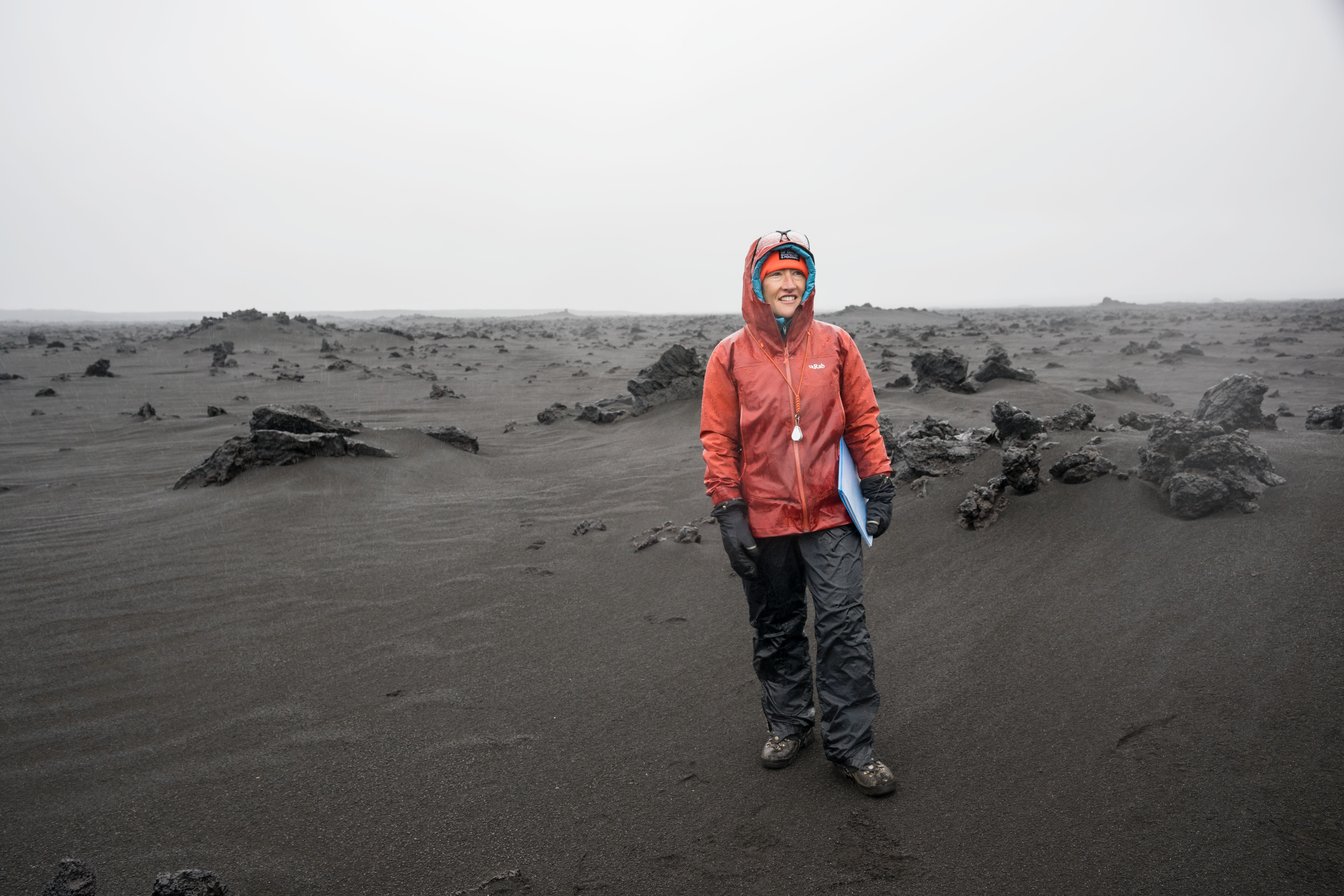
NASA’s Artemis II Crew Uses Iceland Terrain for Lunar Training

NASA’s Webb Peers into the Extreme Outer Galaxy

What’s Up: September 2024 Skywatching Tips from NASA
- Search All NASA Missions
- A to Z List of Missions
- Upcoming Launches and Landings
- Spaceships and Rockets
- Communicating with Missions
- James Webb Space Telescope
- Hubble Space Telescope
- Why Go to Space
- Commercial Space
- Destinations
- Living in Space
- Explore Earth Science
- Earth, Our Planet
- Earth Science in Action
- Earth Multimedia
- Earth Science Researchers
- Pluto & Dwarf Planets
- Asteroids, Comets & Meteors
- The Kuiper Belt
- The Oort Cloud
- Skywatching
- The Search for Life in the Universe
- Black Holes
- The Big Bang
- Dark Energy & Dark Matter
- Earth Science
- Planetary Science
- Astrophysics & Space Science
- The Sun & Heliophysics
- Biological & Physical Sciences
- Lunar Science
- Citizen Science
- Astromaterials
- Aeronautics Research
- Human Space Travel Research
- Science in the Air
- NASA Aircraft
- Flight Innovation
- Supersonic Flight
- Air Traffic Solutions
- Green Aviation Tech
- Drones & You
- Technology Transfer & Spinoffs
- Space Travel Technology
- Technology Living in Space
- Manufacturing and Materials
- Science Instruments
- For Kids and Students
- For Educators
- For Colleges and Universities
- For Professionals
- Science for Everyone
- Requests for Exhibits, Artifacts, or Speakers
- STEM Engagement at NASA
- NASA's Impacts
- Centers and Facilities
- Directorates
- Organizations
- People of NASA
- Internships
- Our History
- Doing Business with NASA
- Get Involved
NASA en Español
- Aeronáutica
- Ciencias Terrestres
- Sistema Solar
- All NASA News
- Video Series on NASA+
- Newsletters
- Social Media
- Media Resources
- Upcoming Launches & Landings
- Virtual Guest Program
- Image of the Day
- Sounds and Ringtones
- Interactives
- STEM Multimedia

Hubble Examines a Spiral Star Factory
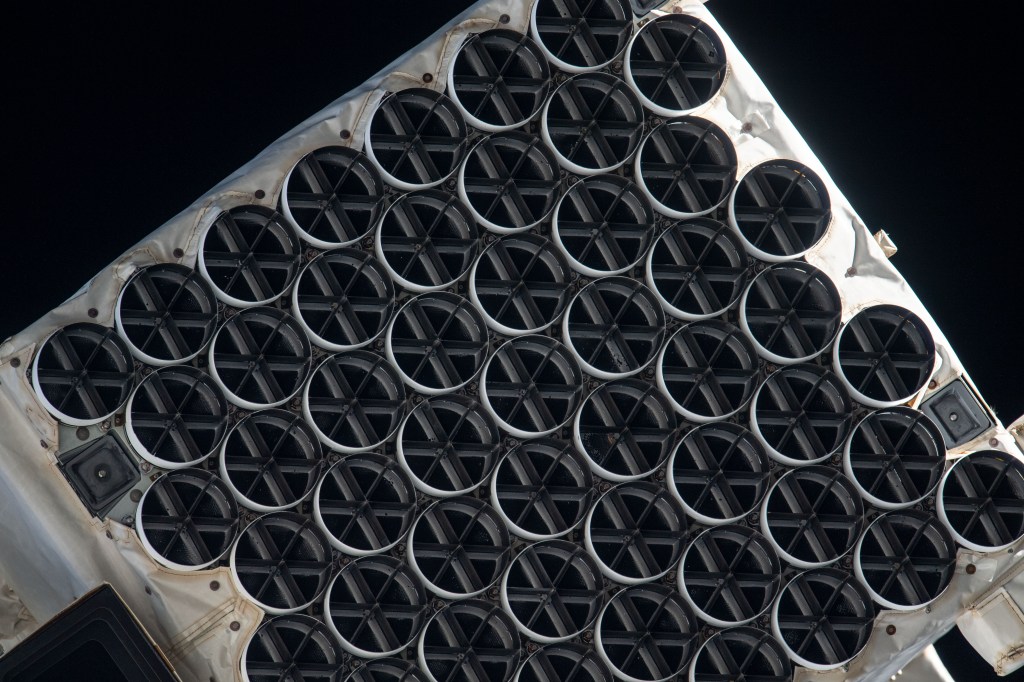
NASA’s SpaceX Crew-9 to Conduct Space Station Research
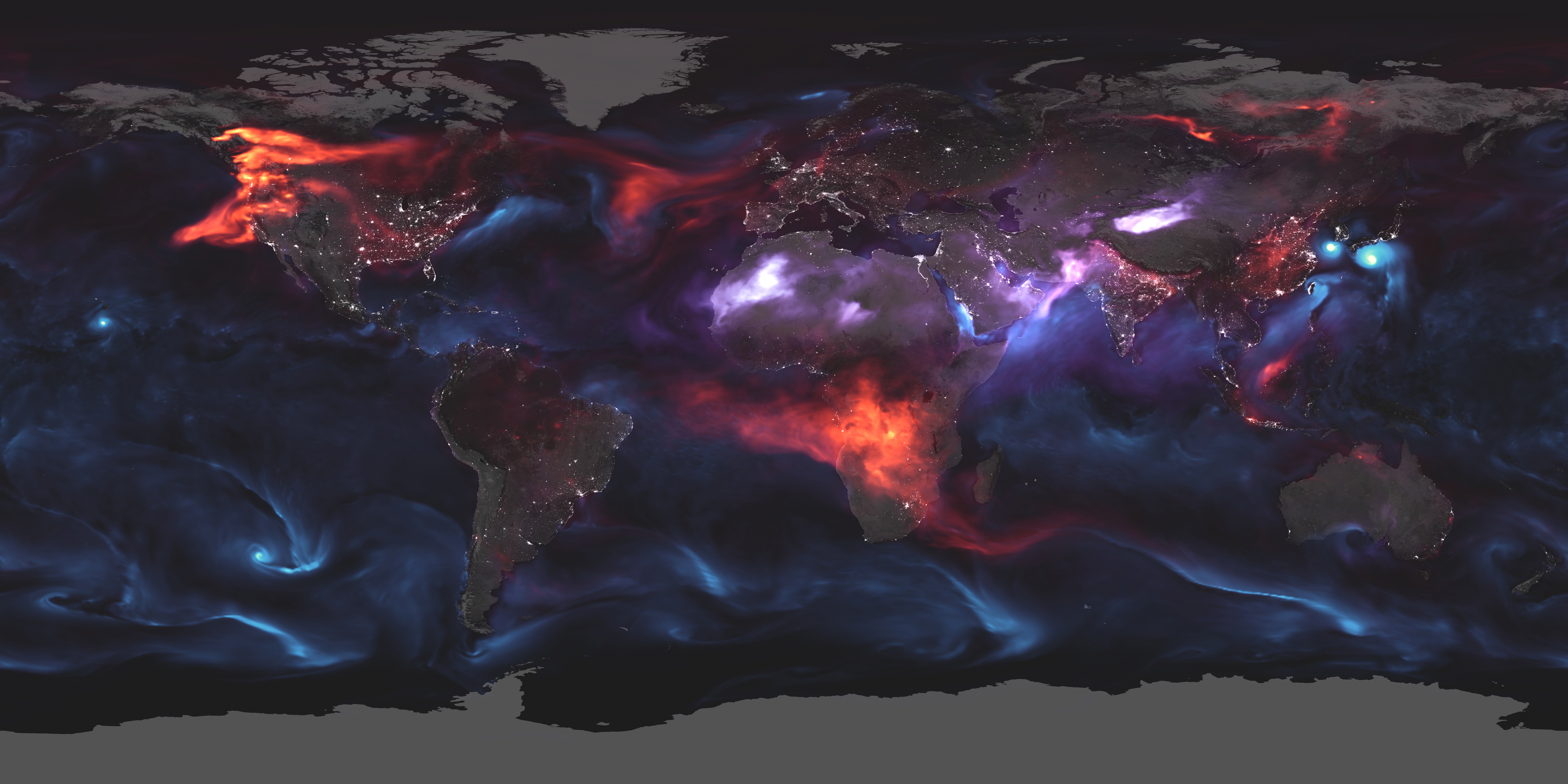
NASA Data Helps Protect US Embassy Staff from Polluted Air

NASA Astronaut Tracy C. Dyson’s Scientific Mission aboard Space Station

Station Science Top News: September 13, 2024
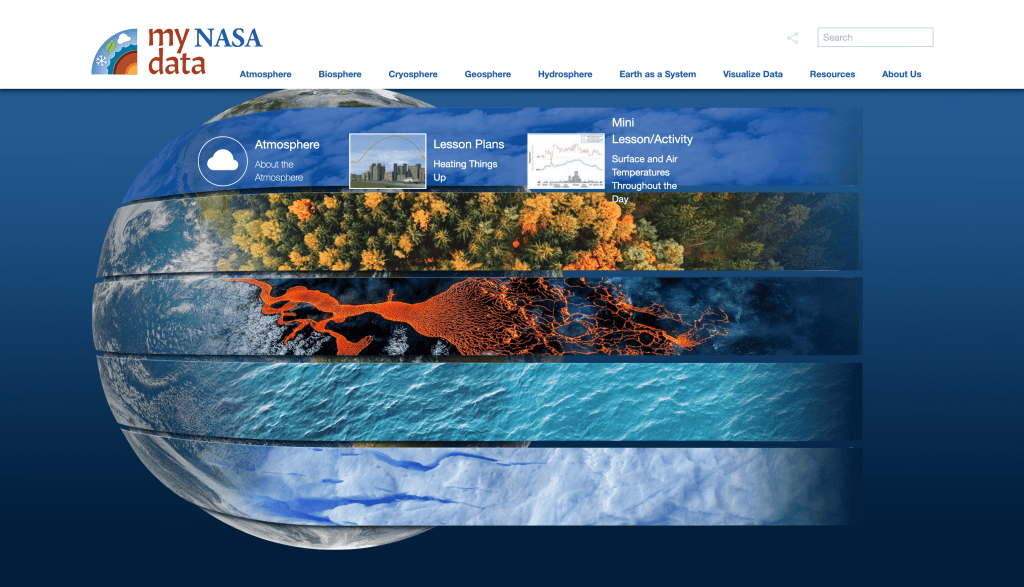
Going Back-to-School with NASA Data
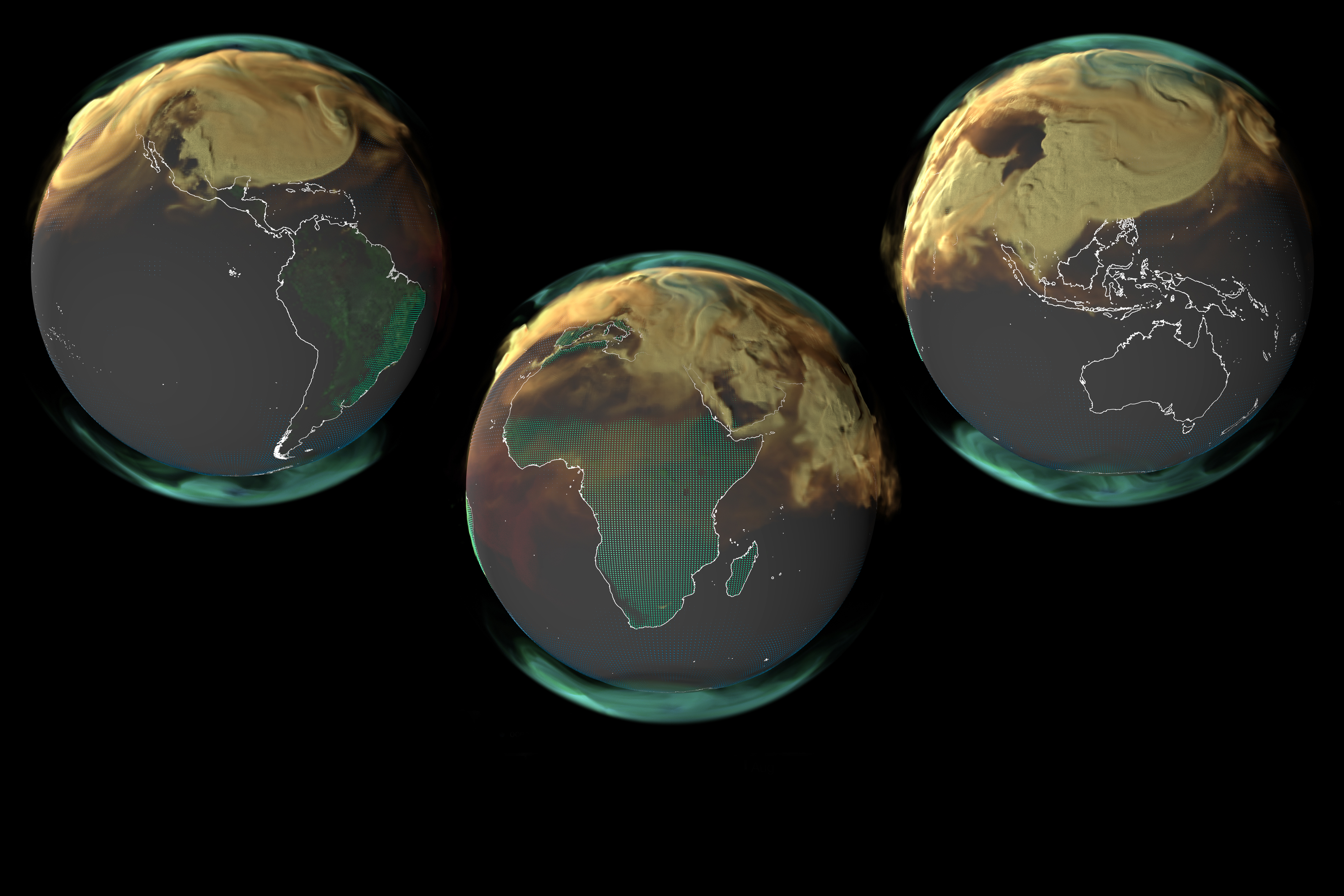
Amendment 48: A.5 Carbon Cycle Science Final Text and Due Dates.
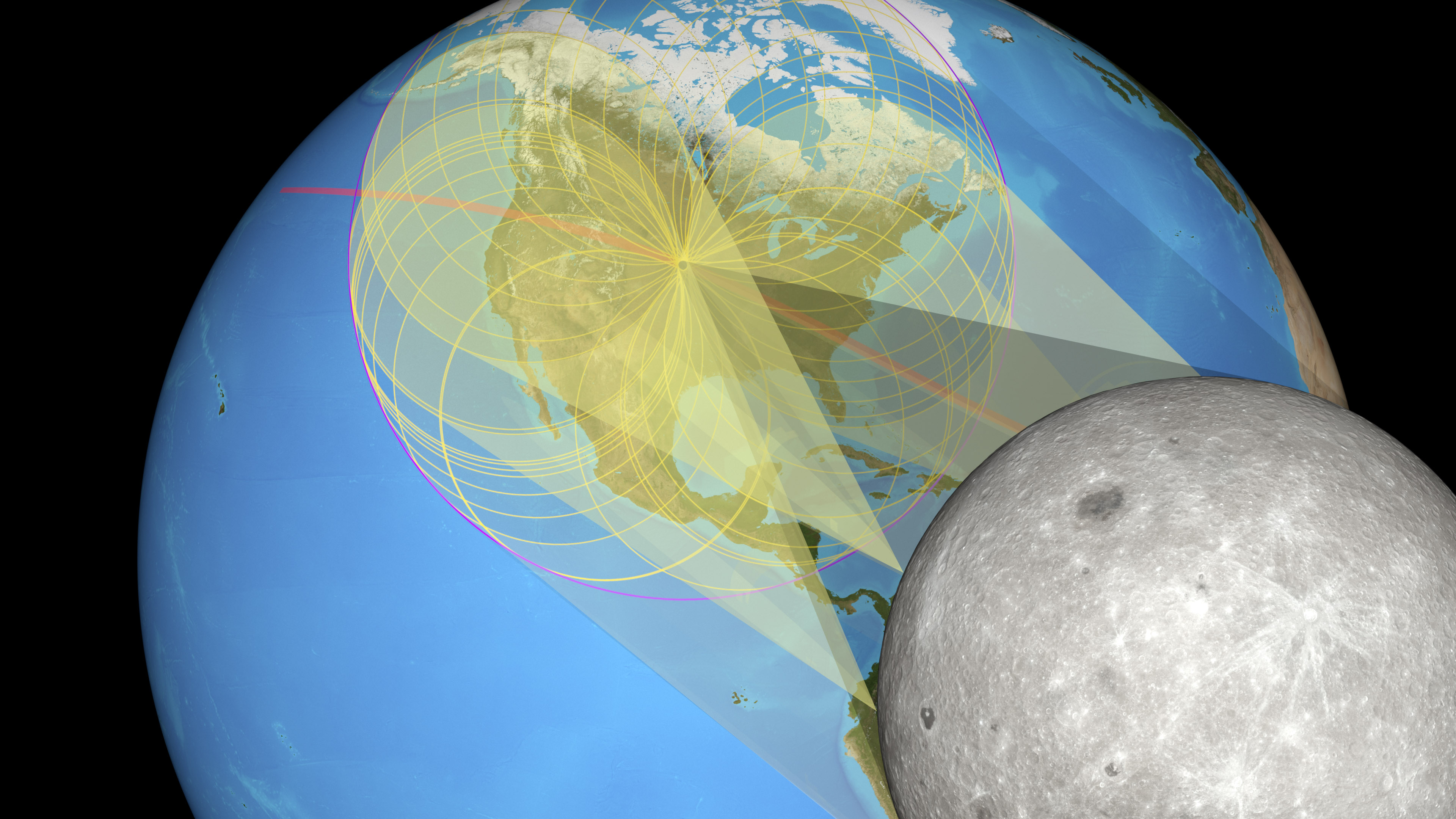
NASA Develops Process to Create Very Accurate Eclipse Maps
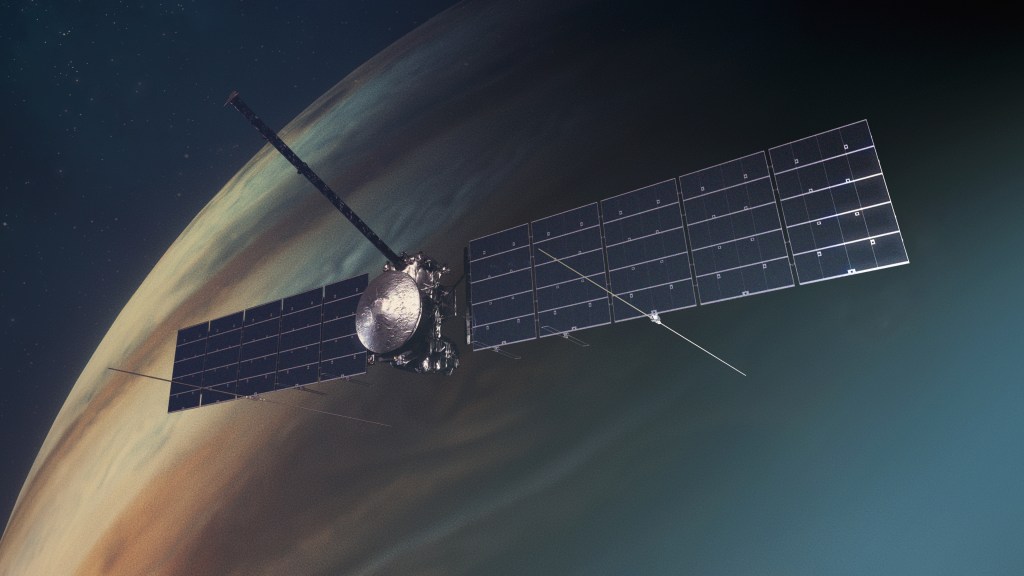
8 Things to Know About NASA’s Mission to an Ocean Moon of Jupiter
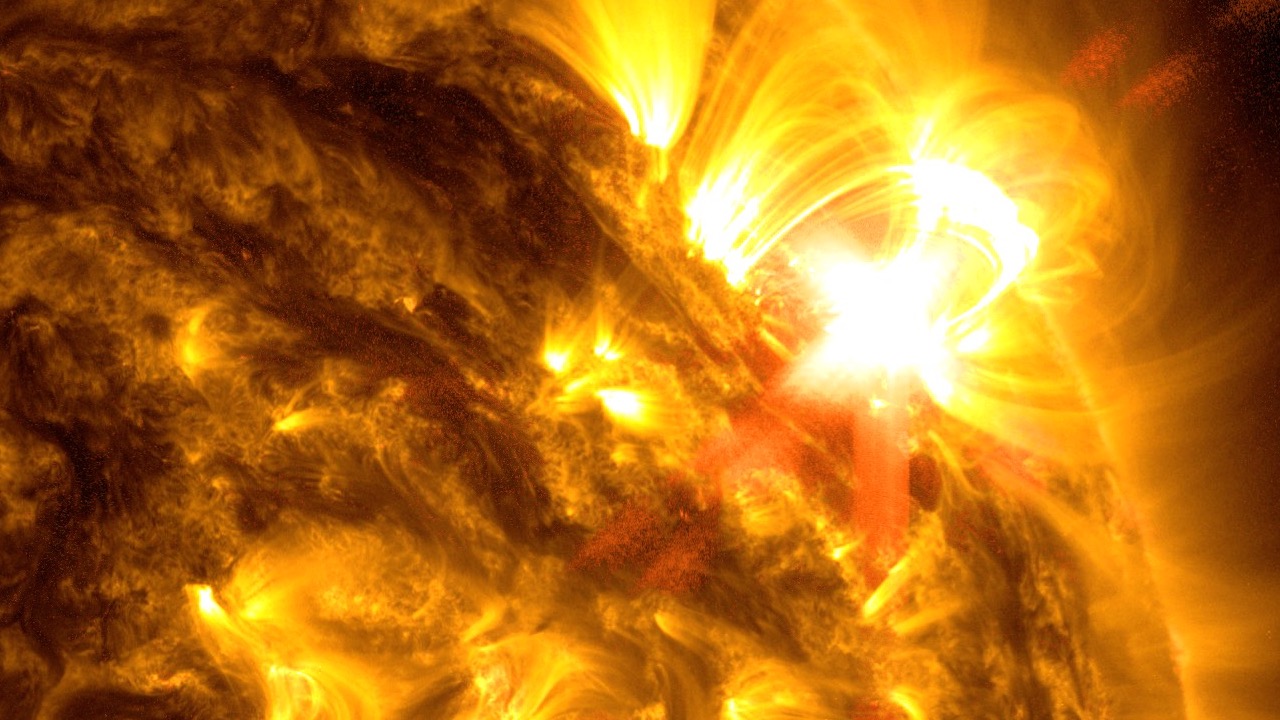
Solar Storms and Flares

Hubble Lights the Way with New Multiwavelength Galaxy View

Burst Chaser

NASA’s Webb Provides Another Look Into Galactic Collisions

A.5 Carbon Cycle Science Clarification
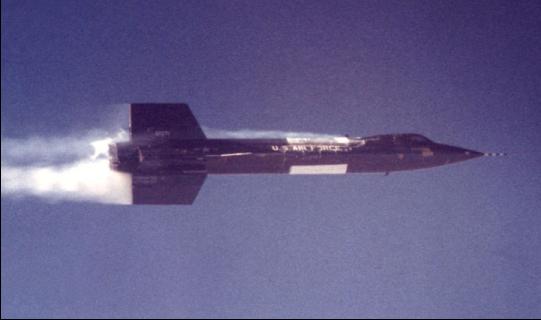
65 Years Ago: First Powered Flight of the X-15 Hypersonic Rocket Plane
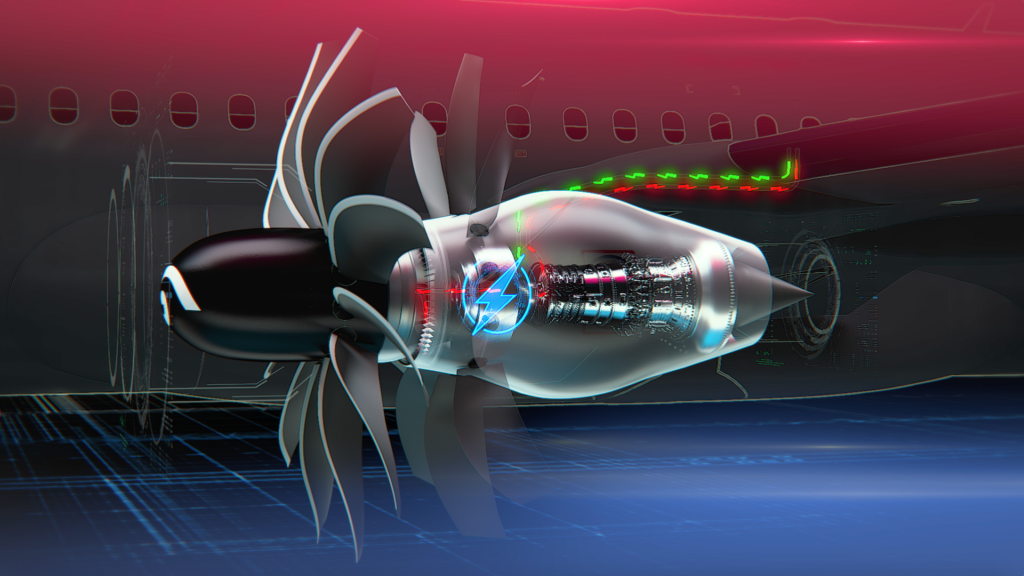
NASA, GE Aerospace Advancing Hybrid-Electric Airliners with HyTEC

NASA Tunnel Generates Decades of Icy Aircraft Safety Data
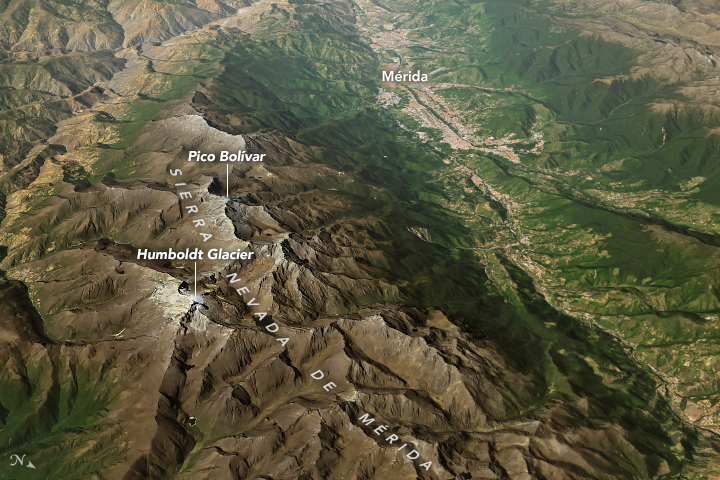
A.55 Decadal Survey Incubation Program: Science and Technology Date Change for Preproposal Telecon

Reinventing the Clock: NASA’s New Tech for Space Timekeeping
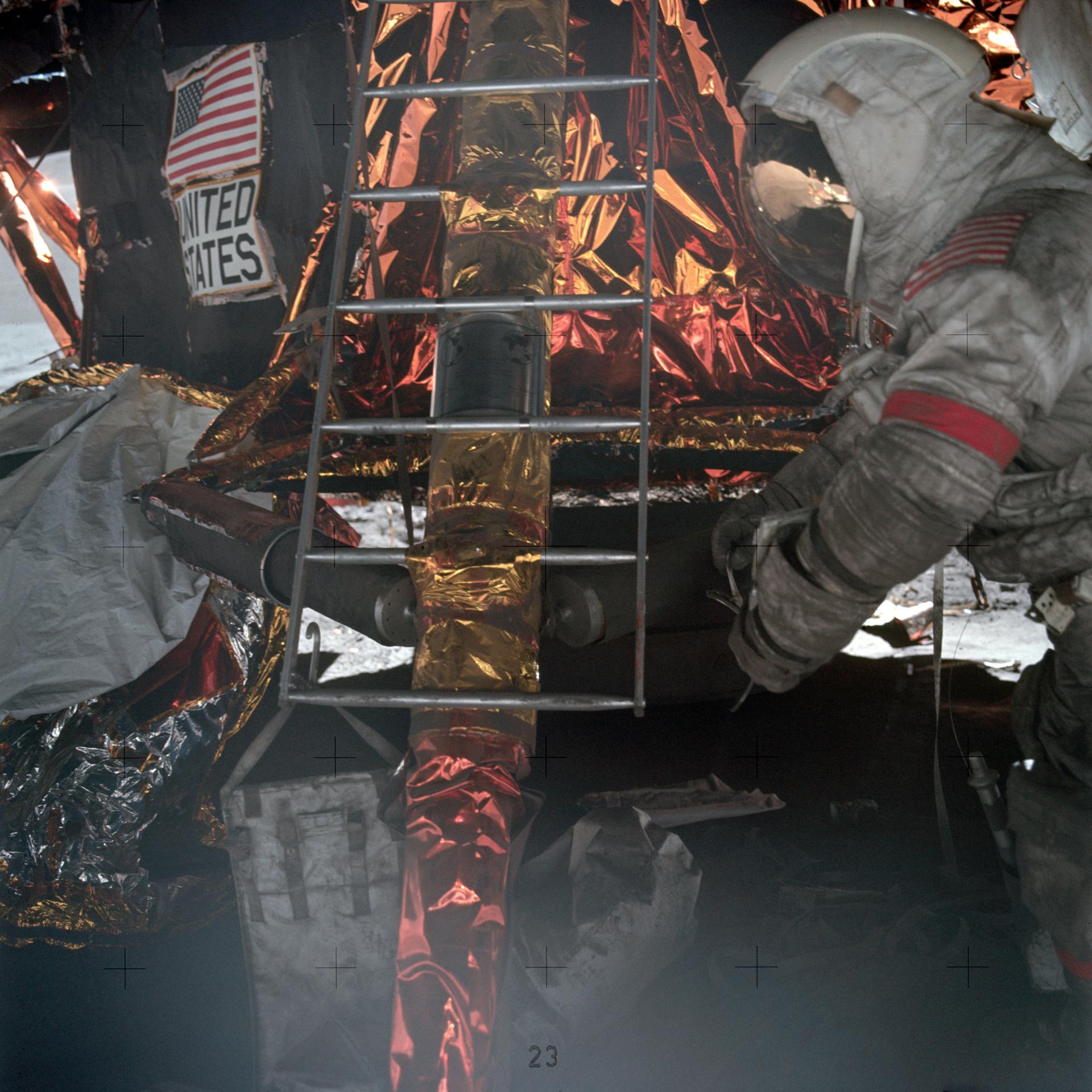
Measuring Moon Dust to Fight Air Pollution

NASA Moon to Mars Architecture Art Challenge

Bring NASA Into Your Classroom This Fall Through Virtual Experiences

How Do I Navigate NASA Learning Resources and Opportunities?

Printed Engines Propel the Next Industrial Revolution

15 Years Ago: Japan launches HTV-1, its First Resupply Mission to the Space Station

La NASA invita a los medios al lanzamiento de Europa Clipper

El X-59 de la NASA avanza en las pruebas de preparación para volar

La NASA invita a creadores de las redes sociales al lanzamiento de la misión Europa Clipper
Where in the air.

Grade Levels
Grades 5-8, Informal Education
Earth Science, Physical Science, Weather and Climate, Flight and Aeronautics
Lesson Plans / Activities
Students learn about the layers of the atmosphere, including what can be found in each of the different layers.
Students will be able to:
- Identify the layers of the atmosphere, including their location relative to the other layers
- Determine in which layer of the atmosphere different objects can be found
Where in the Air Classroom Activity Educator Guide
Where in the Air Classroom Activity Student Guide

IMAGES
VIDEO
COMMENTS
The majority of weather phenomenon on the planet occurs in the troposphere, which is the lowest layer of the atmosphere. It extends up to about 36,000 feet. Helicopters and light aircraft typically fly in the troposphere. Light aircrafts are unable to operate at higher altitudes because they lack pressurized cabins.
Planes fly in the second layer of the atmosphere called the stratosphere. This layer is placed above the troposphere and below the mesosphere. The layer got its name because it is stratified in temperature. This means that the warmer layers are higher up while the colder layers are closer to our planet. The reason the temperature increases with ...
The majority of the oxygen in the atmosphere is concentrated below 35 000 ft (10.7 km), which is approximately 10% of the height of the altitude designated as the start of space (Karmen Line). Five Atmospheric Layers. There are five distinct layers making up our atmosphere. These layers are differentiated by their differing: thermal characteristics
Flying High: Airplanes in the Stratosphere 👉 Flying High 👉 Discover why airplanes soar high in the stratosphere, the second layer of Earth's atmosphere, fo...
Temperature determines the five main layers, but the atmosphere contains other layers, too. Ozone Layer: The ozone layer is within the lower stratosphere. In this region, ozone concentration ranges from 2 to 8 parts per million. The layer's altitude is from 15-35 km (9.3-21.7 mi), although its thickness varies geographically and seasonally.
The envelope of gas surrounding the Earth is divided into four distinct layers by thermal characteristics (temperature changes), chemical composition, movement, and density. The troposphere starts at the Earth's surface and extends to about 15 kilometers (9 miles) high. The stratosphere starts just above the troposphere and extends to 50 ...
According to Newton's Third Law, for every action there's an equal and opposite reaction. When the air rushes out the back of the engines, there is a reaction force that pushes the airplane ...
Layers of the Atmosphere. There are several layers to the atmosphere with the troposphere being closest to the Earth's surface extending to about 60,000 feet at the equator. Following is the stratosphere, mesosphere, ionosphere, thermosphere, and finally the exosphere. The tropopause is the thin layer between the troposphere and the stratosphere.
The exosphere, or mesosphere, is the outer layer of the atmosphere. It begins at an altitude of 600 miles and extends to the limits of the atmosphere. In this layer, the temperature is fairly constant at 2,500° Kelvin, and propagation of sound is thought to be impossible due to lack of molecular substance.
Do planes fly in the troposphere? The troposphere is the lowest layer of Earth's atmosphere, extending from sea level up to about 11 miles. This is where most meteorological phenomena happen, including thunderstorms and other weather patterns. Also, the humid troposphere layer is where formations of thicker clouds occur.
The average variation of air pressure (P), temperature (T), and density (ρ) with altitude is called the standard atmosphere. The table below shows how those variables change with height (H) above sea level. This table is also shown in Learning Goal 2a. Pressure and density decrease smoothly with increasing altitude, as is discussed in Learning ...
The Mesosphere. The mesosphere, the coldest layer of the Earth's atmosphere, begins at an altitude of 50 kilometres and extends to about 80 kilometres. Temperatures here can range from -80 ºC to -90 ºC. This layer contains only 0.1% of the total air, which causes the creation of atmospheric waves and turbulence, sensitive on a large space ...
Exosphere. This is the outermost layer of the atmosphere. It extends from about 375 miles (600 km) to 6,200 miles (10,000 km) above the earth. In this layer, atoms and molecules escape into space and satellites orbit the earth. At the bottom of the exosphere is a transition layer called the thermopause.
Commercial planes fly at an altitude of around 36,000 feet in the layer of the atmosphere called the stratosphere. Planes fly in the stratosphere to increase fuel efficiency, lessen the risk of issues due to air traffic, avoid weather events, and to have time to deal with emergencies. If you pay attention to what the pilot says while flying ...
Vocabulary. We live at the bottom of an invisible ocean called the atmosphere, a layer of gases surrounding our planet. Nitrogen and oxygen account for 99 percent of the gases in dry air, with argon, carbon dioxide, helium, neon, and other gases making up minute port ions. Water vapor and dust are also part of Earth 's atmosphere.
Jet streams are located about five to nine miles above Earth's surface in the mid to upper troposphere — the layer of Earth's atmosphere where we live and breathe. Airplanes also fly in the mid to upper troposphere. So, if an airplane flies in a powerful jet stream and they are traveling in the same direction, the airplane can get a boost.
The first layer, known as the troposphere, extends from 6 to 20 kilometers (km) (4 to 12 miles) over the northern and southern poles and up to 48,000 feet (14.5 km) over the equatorial regions. The vast majority of weather, clouds, storms, and temperature variances occur within this first layer of the atmosphere.
Description. The atmosphere is the space around the Earth which is filled by a mixture of gasses held against the Earth by the force of gravity. This mixture of gasses we call air. Because the Earth spins on its axis, and because the surface temperature is greater at the equator than at the poles, the atmosphere extends further out into space ...
The Atmosphere. Meteorology is the study of the Earth's atmosphere and the physical processes that occur within it. Flight academies teach Meteorology since it is extremely important for student pilots because the atmosphere is the medium through which the aircraft moves. It is essential to know what conditions are present along a route, and ...
Students learn about the layers of the atmosphere, including what can be found in each of the different layers. Students will be able to: Identify the layers of the atmosphere, including their location relative to the other layers. Determine in which layer of the atmosphere different objects can be found. Where in the Air Classroom Activity ...
The correct option is D Troposphere. Most of the aeroplanes fly in the troposphere. It extends up to approximately 11 km above sea level. The exosphere is the outermost layer of the atmosphere and extends into outer space. The Mesosphere extends upto 85 km above sea level while the Thermosphere extends upto 1000 km above sea level.
The Zephyr S is the first production model. The stratosphere is the second layer of our atmosphere. It begins around 33,000ft (10,000m) and ends at around 160,000ft (48,800m). If an aircraft can ...
Commercial jet aircraft fly in the lower stratosphere to avoid the turbulence which is common in the troposphere below. The stratosphere is very dry; air there contains little water vapor. Because of this, few clouds are found in this layer; almost all clouds occur in the lower, more humid troposphere.